SPECIAL TOPIC
Reservoir Monitoring
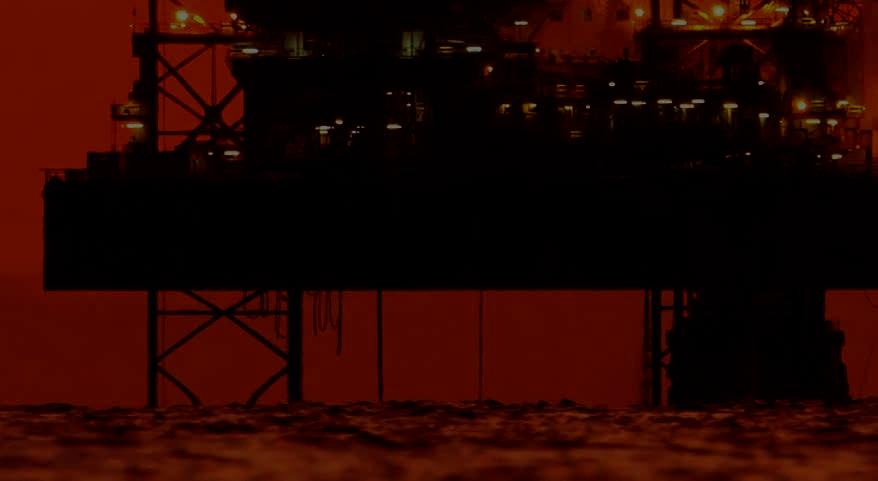
EAGE NEWS Still time to submit papers for Vienna




TECHNICAL ARTICLE Tutorial on least squares migration and full waveform imaging
INDUSTRY NEWS bp Energy Outlook predicts decline of oil
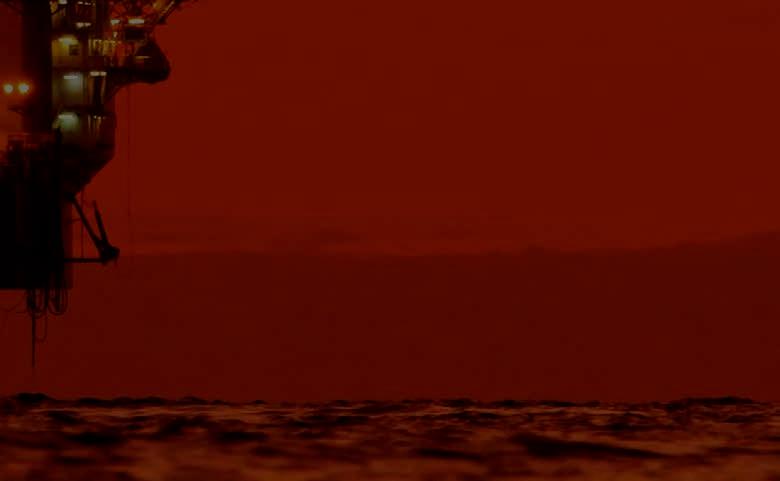




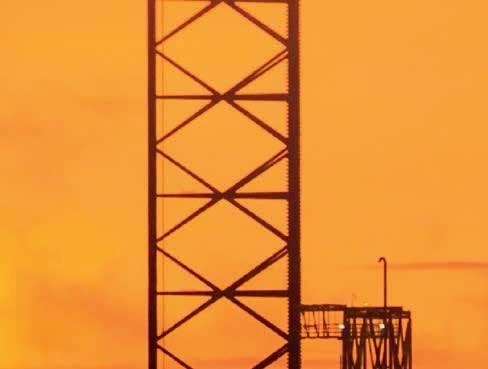
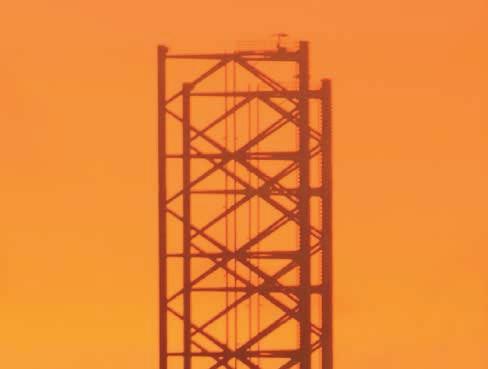

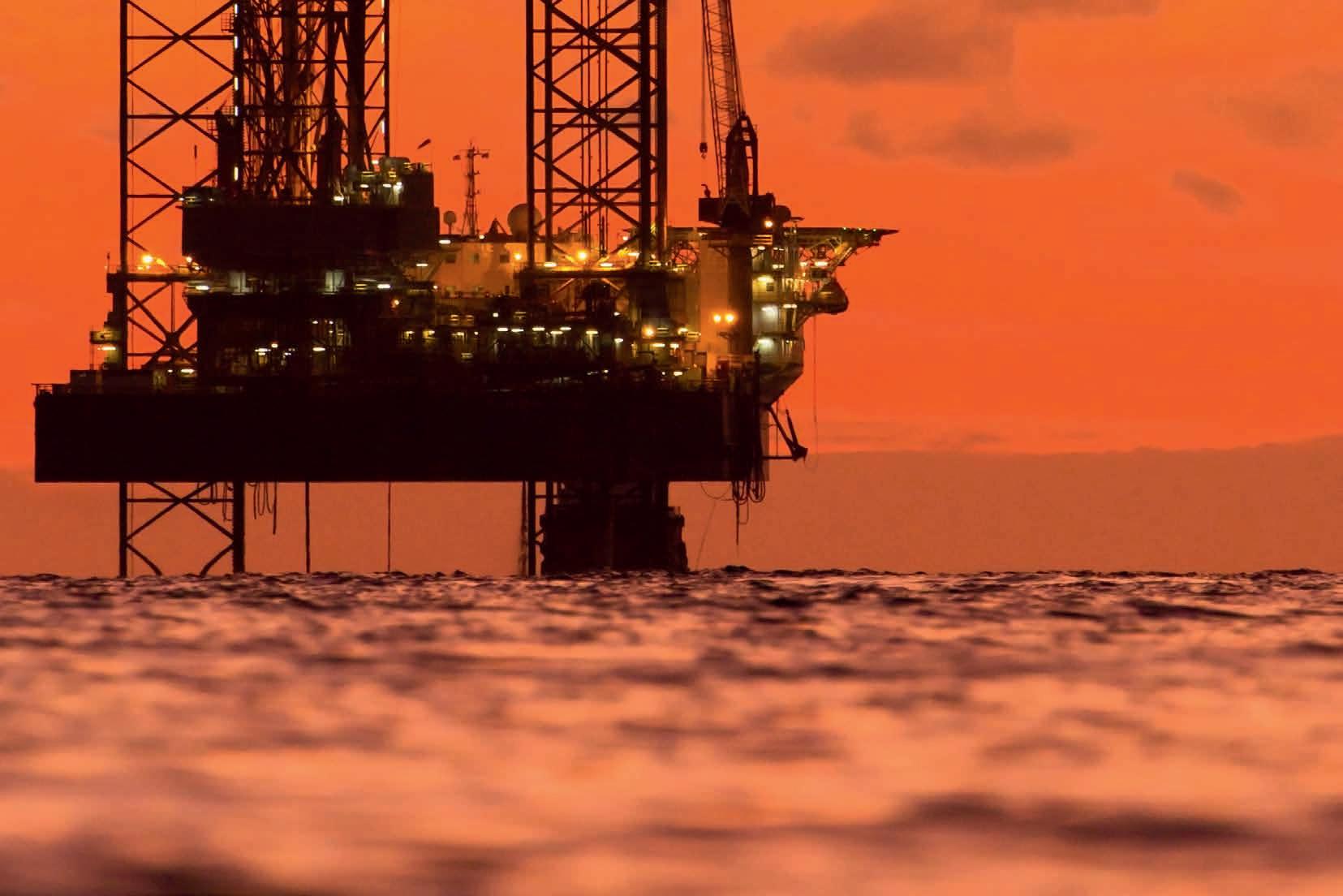
VOLUME 41 I ISSUE 3 I MARCH 2023

cgg.com/earthdata SE E THINGS DI FF ERE NT LY ALL-ROUND BETTER SUBSURFACE IMAGING Scan the QR code to see for yourself.
CHAIR EDITORIAL BOARD
Gwenola Michaud (Gwenola.Michaud@cognite.com)
EDITOR
Damian Arnold (editorfb@eage.org)
MEMBERS, EDITORIAL BOARD
• Lodve Berre, Norwegian University of Science and Technology (lodve.berre@ntnu.no)
• Philippe Caprioli, SLB (caprioli0@slb.com)
• Satinder Chopra, SamiGeo (satinder.chopra@samigeo.com)
• Anthony Day, PGS (anthony.day@pgs.com)
• Peter Dromgoole, Retired Geophysicist (peterdromgoole@gmail.com)
• Rutger Gras, Consultant (r.gras@gridadvice.nl)
• Stephen Hallinan, CGG Stephen.Hallinan@CGG.com
• Hamidreza Hamdi, University of Calgary (hhamdi@ucalgary.ca)
• Clément Kostov, Freelance Geophysicist (cvkostov@icloud.com)
• John Reynolds, Reynolds Geo-Solutions Ltd (jmr@reynolds-geo.com)
• Peter Rowbotham, Apache (Peter.Rowbotham@apachecorp.com)
• Pamela Tempone, Eni (Pamela.Tempone@eni.com)
• Angelika-Maria Wulff, Consultant (gp.awulff@gmail.com)
EAGE EDITOR EMERITUS
Andrew McBarnet (andrew@andrewmcbarnet.com)
PUBLICATIONS MANAGER
Martha Theodosiou (mtu@eage.org)
MEDIA PRODUCTION
Saskia Nota (firstbreakproduction@eage.org)
PRODUCTION ASSISTANT
Ivana Geurts (firstbreakproduction@eage.org)
ADVERTISING INQUIRIES corporaterelations@eage.org
EAGE EUROPE OFFICE
Kosterijland 48
3981 AJ Bunnik
The Netherlands
• +31 88 995 5055
• eage@eage.org
• www.eage.org
EAGE MIDDLE EAST OFFICE
EAGE Middle East FZ-LLC
Dubai Knowledge Village
Block 13 Office F-25 PO Box 501711
Dubai, United Arab Emirates
• +971 4 369 3897
• middle_east@eage.org
• www.eage.org
EAGE ASIA PACIFIC OFFICE
UOA Centre
Office Suite 19-15-3A
No. 19, Jalan Pinang
50450 Kuala Lumpur
Malaysia
• +60 3 272 201 40
• asiapacific@eage.org
• www.eage.org
EAGE AMERICAS SAS
Edificio Centro Ejecutivo Santa Barbara
Av. Cra. 19 #118-95 - Office: 501
• +57 310 8610709
• americas@eage.org
• www.eage.org
EAGE MEMBERS CHANGE OF ADDRESS NOTIFICATION
Send to: EAGE Membership Dept at EAGE Office (address above)
FIRST BREAK ON THE WEB www.firstbreak.org
ISSN 0263-5046 (print) / ISSN 1365-2397 (online)
65
4D seismic least square migration in carbonates: A case of successful matching
and Ivan Berranger
Special Topic: Reservoir Monitoring
37 Surface or shallow borehole for induced seismicity: Is this the question? Ngoc-Tuyen Cao, Leo Eisner, Erika Angerer, Alexandre Egreteau, Zuzana Jechumtálová and Petr Matoušek
43 Stress evolution during CO2 storage — a case for long-term monitoring Mohammed Braim, Sher Bowman and Breanne Waggott
49 An integrated workflow for the probabilistic estimation of pressure and saturation changes from 4D seismic data: Application to the Catcher fields, Central North Sea
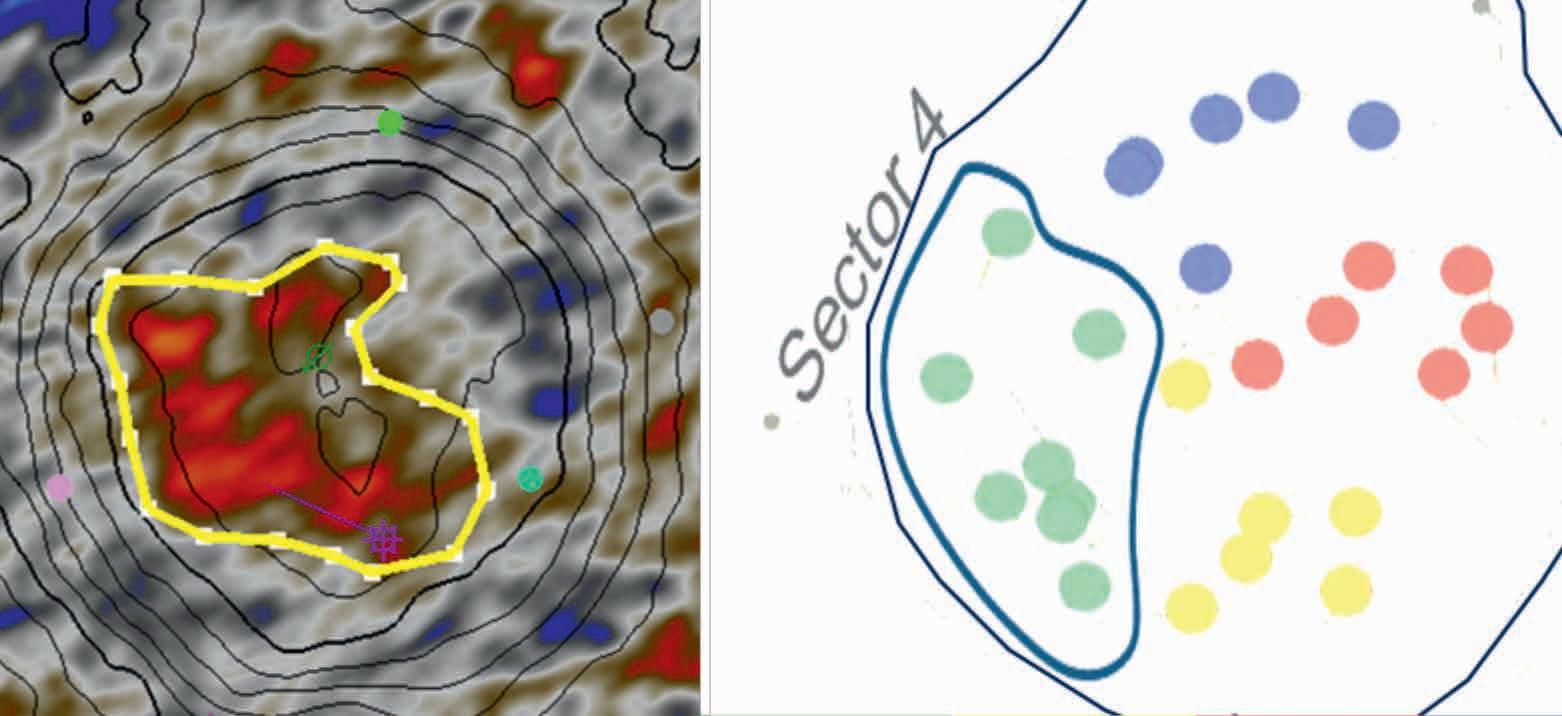
Gustavo Côrte, Sean Tian, Gary Marsden, Matthew Gibson and Colin MacBeth
57 Multi-well characterisation of complex carbonate reservoirs using S-Wave impedance and P-Wav impedance: Mission Canyon carbonates (Mississippian), Williston Basin, US, as a test case
Killian Ikwuakor
65 4D seismic least square migration in carbonates: A case of successful matching
Mohamed Mahgoub, Andy Anderson Bery, Yasir Bashir and Olivier Kirstetter
75 High-precision gravimetric monitoring provides insights into subsurface processes
Ola Eiken, Torkjell Stenvold and Marco Haverl
Feature: WhatsUp!
81 How mentoring can promote gender equality in academia and industry Adeline Parent
82 Calendar
cover: Offshore drilling rig at sunset. Latest reservoir monitoring techniques improve performance.
FIRST BREAK I VOLUME 41 I MARCH 2023 1 Editorial Contents 3 EAGE News 13 Personal Record Interview 14 Monthly Update 16 Crosstalk 19 Industry News Technical Article 27
Tutorial: Least squares migration and full waveform imaging Ian F. Jones, Carlos Calderón-Macías, Beng Seong Ong
FIRST BREAK ® An EAGE Publication
European Association of Geoscientists & Engineers
Board 2022-2023
Near Surface Geoscience Division
Esther Bloem Chair
Andreas Aspmo Pfaffhuber Vice-Chair
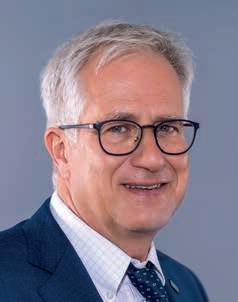
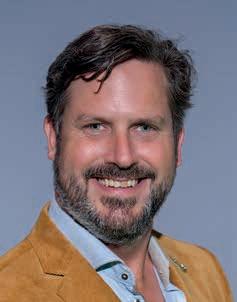
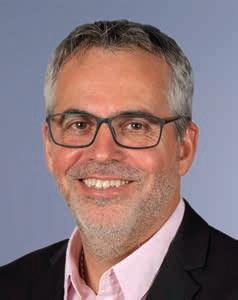
Micki Allen Contact Officer EEGS/North America
Adam Booth Committee Member
Hongzhu Cai Liaison China
Deyan Draganov Technical Programme Officer
Wolfram Gödde Liaison First Break
Hamdan Ali Hamdan Liaison Middle East
Vladimir Ignatev Liaison Russia / CIS
Musa Manzi Liaison Africa
Myrto Papadopoulou Young Professional Liaison
Catherine Truffert Industry Liaison

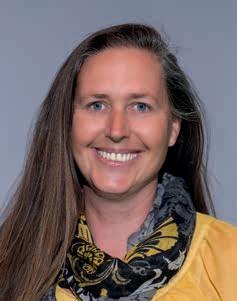
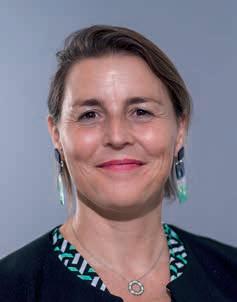
Panagiotis Tsourlos Editor in Chief Near Surface Geophysics
Florina Tuluca Committee member
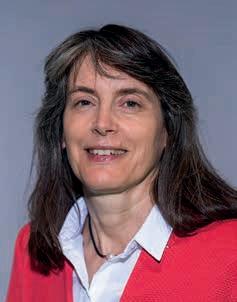
Oil & Gas Geoscience Division
Lucy Slater Chair
Yohaney Gomez Galarza Vice-Chair
Michael Peter Suess Immediate Past Chair; TPC
Erica Angerer Member
Wiebke Athmer Member
Juliane Heiland TPC
Tijmen Jan Moser Editor-in-Chief Geophysical Prospecting

Adeline Parent WGE SIC Liaison
Matteo Ravasi YP Liaison
Jonathan Redfern Editor-in-Chief Petroleum Geoscience
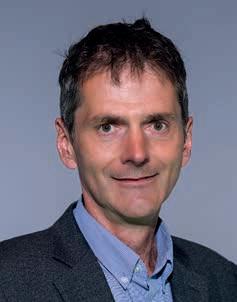
Giovanni Sosio DET SIC Liaison
Aart-Jan van Wijngaarden Technical Programme Officer
SUBSCRIPTIONS
First Break is published monthly. It is free to EAGE members. The membership fee of EAGE is € 80.00 a year including First Break, EarthDoc (EAGE’s geoscience database), Learning Geoscience (EAGE’s Education website) and online access to a scientific journal.
Companies can subscribe to First Break via an institutional subscription. Every subscription includes a monthly hard copy and online access to the full First Break archive for the requested number of online users.
Orders for current subscriptions and back issues should be sent to EAGE Publications BV, Journal Subscriptions, PO Box 59, 3990 DB, Houten, The Netherlands. Tel: +31 (0)88 9955055, E-mail: subscriptions@eage.org, www.firstbreak.org.
First Break is published by EAGE Publications BV, The Netherlands. However, responsibility for the opinions given and the statements made rests with the authors.
COPYRIGHT & PHOTOCOPYING © 2023 EAGE
All rights reserved. First Break or any part thereof may not be reproduced, stored in a retrieval system, or transcribed in any form or by any means, electronically or mechanically, including photocopying and recording, without the prior written permission of the publisher.
PAPER
The publisher’s policy is to use acid-free permanent paper (TCF), to the draft standard ISO/DIS/9706, made from sustainable forests using chlorine-free pulp (Nordic-Swan standard).
2 FIRST BREAK I VOLUME 41 I MARCH 2023
Caroline Le Turdu Membership and Cooperation Officer
Peter Rowbotham Publications Officer
Pascal Breton Secretary-Treasurer
Aart-Jan van Wijngaarden Technical Programme Officer
Esther Bloem Chair Near Surface Geoscience Division
Lucy Slater Chair Oil & Gas Geoscience Division
Edward Wiarda Vice-President
Jean-Marc Rodriguez President
Maren Kleemeyer Education Officer
Late-breaking submission option still open for Vienna Annual
receiving your late-breaking abstracts by 15 March 2023, 23:59 CET.
If you missed the original abstract submission deadline for this year’s Annual Conference & Exhibition in Vienna, we have great news for you!
We are excited to announce that the Late-Breaking Call for Abstracts has been opened and will be running until 15 March 2023. This allows submitters to take advantage of the extra time to be included in our Technical Programme and present their work amongst peers and other leading geoscience and engineering practitioners.

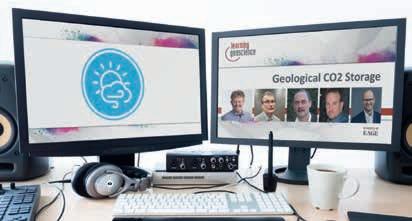
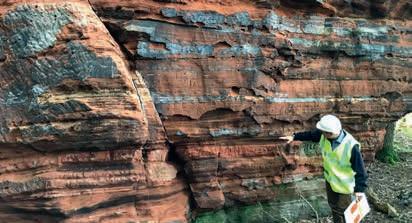
Late-breaking abstracts will be accepted for poster presentations. Poster sessions will be conducted in a printed poster format, which creates more differentiation from the oral sessions. Poster presenters will enjoy a dedicated presentation slot to showcase their work and discuss in small groups. Printed posters will also be available for viewing all day which will increase visibility and opportunities for networking around the poster area.
If you have exciting new research, new insights, important findings or new developments that were not yet known or fully available before the first round abstract deadline, don’t miss out on this final opportunity to contribute to our unrivalled Technical Programme. Visit eageannual.org to find out more details about the topics, submission process and other relevant information. We look forward to
Meantime, following the review and selection of papers out of this year’s large pool of abstracts already submitted, the preliminary Technical Programme for the EAGE Annual 2023 will be announced shortly. We would like to extend a big thank you to everyone who submitted an abstract – your input is highly valuable, and we are confident that we are heading for another high-quality programme at the Annual meeting in Vienna this June. In addition, we are once again indebted to the many reviewers who have spent time assessing and choosing submissions to ensure the highest quality programme possible spanning many disciplines.

EAGE statement on earthquakes in Turkey and Syria
From Jean-Marc Rodriguez, president EAGE
The EAGE community is deeply saddened by the catastrophic earthquakes in Turkey and Syria causing untold loss of life and destruction. Our deepest sympathies go to the people of both countries in the face of this natural disaster, which has a particular poignancy for our geoscientist colleagues in the region. Let us hope that reparations and the road to recovery from this human tragedy can be implemented as speedily as possible.
FIRST BREAK I VOLUME 41 I MARCH 2023 3
04
06 Our learning package for you 10 HIGHLIGHTS
Energy transition at the Annual
Borehole physics + seabed seismic in Milan
Energy Transition short courses are a highlight at the EAGE Annual

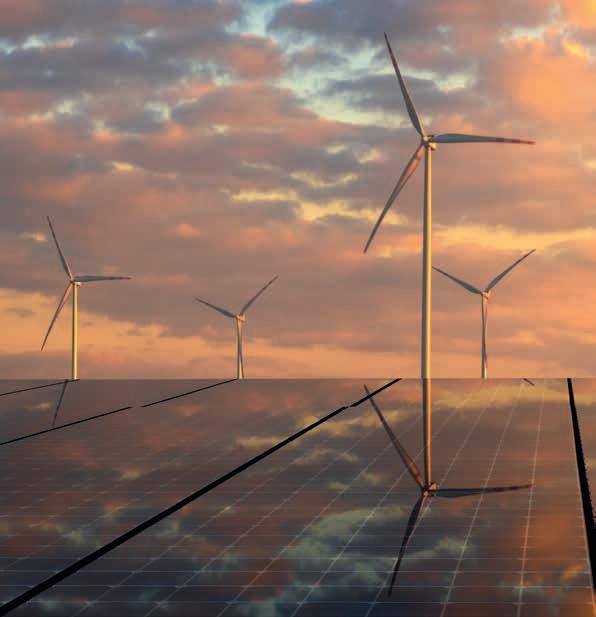
Why not make the most of your EAGE Annual experience in Vienna by adding some short courses to your visit, particularly those dealing with the hot topic of energy transition?
At the beginning and at the end of the week of the 84th EAGE Annual you have the opportunity to update your knowledge on the latest energy transition trends from our team of authoritative instructors, and at the same time meet with colleagues from various geoscience and engineering disciplines.
The one-day short courses are offered by both EAGE and SPE to help professionals and academics stay up to date with key knowledge relevant to developments in the energy transition field. Upon completion, all courses allow you to obtain credits for your training. By participating in the two EAGE short courses ‘Basics of Carbon Capture and Storage’ and ‘An Introduction to Offshore Wind’ you will earn CPD (Continuing Professional Development) points for the European Geologist (EurGeol) title. The SPE training course ‘Energy Transition for Oil & Gas Professionals’ will earn you CEUs (Continuing Education Units).
The course ‘Basics of Carbon Capture and Storage’ will address topics including Anthropogenic influences on the geological carbon cycle; Capturing and transporting carbon dioxide; Geological storage;
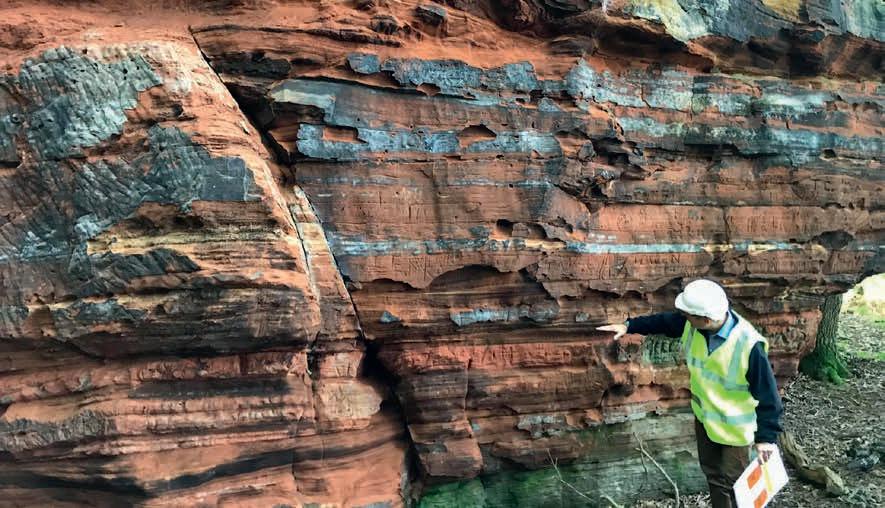
Leakage and monitoring for CO2; The finances: How do you make CCS pay for itself?; CCS regulation, and public views of CCS. This course satisfies a part of the market that is not currently catered for, i.e., the wider science, risks, financing, planning and social licence aspects of CCS. The course instructor Prof Michael H. Stephenson is a well-known communicator of science and has published three single-author popular science books. His book on CCUS ‘Returning Carbon to Nature’ is widely seen as the go-to introductory text on CCUS. Join on Monday 5 June, and earn five CPD points.
In ‘An Introduction to Offshore Wind’ you will learn more about renewable energies and why offshore wind is often the preferred option, guided by Jeroen Godtschalk (BLIX Consultancy). The course is designed to improve understanding of the process and the steps required to establish an offshore wind farm; what factors are influencing the design and the business case of such farms; MetOcean, geophysical and geotechnical data collection; and the role of geoscientists in site investigation work. Participate in this course on Friday 9 June and receive five CPD points.
The SPE training course ‘Energy Transition for Oil & Gas Professionals’ aims to help oil and gas professionals position themselves for the impending energy tran-

sition by gaining an understanding of the relevant concepts/technologies and how they relate to their E&P expertise. The course is scheduled on Monday 5 June and led by Dr Srikanta Mishra, technical director for geo-energy modelling and analytics at Battelle Memorial Institute. Participation in the course earns 0.8 CEUs.
If you are interested in joining one of these courses, visit our website eageannual. org for more detailed information and register. Seats are limited. New for this year, we have introduced the All Access Pass – one pass at a reduced rate that allows you to maximise your time away from the office and experience the full range of content available at the 84th EAGE Annual in Vienna. Opting in for an All Access registration, you can participate in the full conference and exhibition and choose to add one or both EAGE short courses to your event agenda, together with workshops, field trips and hackathon. You can save even more (up to 45%) if you reserve your attendance before the Early Bird deadline of 15 March 2023.
Kindly note that the SPE training course is not included in the All Access package and must be registered separately.
4 FIRST BREAK I VOLUME 41 I MARCH 2023 EAGE NEWS
Short courses are the best way to get acquainted with the latest energy transition advances.
‘Basics of Carbon Capture and Storage’ is our latest EET course.
DUG INSIGHT PRIORITISING GEOSCIENCE



Modern interpretation workflows need modern software. Geoscientists must adapt to increasing data volumes and evolving technology requirements. Leaders must onboard new team members smoothly, and have a comprehensive set of tools to tackle any challenge across land, marine, and ocean-bottom surveys.







DUG Insight is a full-service solution for qualitative interpretation, visualisation, 2D/3D/time-lapse/prestack amplitude analysis and rock-property inversion, advanced seismic-data time-processing and depth-imaging, and FWI—this includes DUG’s revolutionary multi-parameter high-frequency FWI imaging technology. DUG Insight feels like a single package designed by a single team. Because it is.
Let DUG Insight's state-of-the-art technology help you make your next discovery.
•ISO 27001• OC M PASSASSURANCESERV SEC •ISO 9001• OC M PASSASSURANCESERV SEC
dug.com/insight For more information contact info@dug.com
Borehole geophysics and seabed seismic workshops to share insights at Milan venue
Our EAGE Borehole Geophysics workshop will be celebrating a remarkable seventh edition in Milan from 18-20 September 2023, and for the first time will be held in parallel with the second EAGE workshop on Seabed Seismic Today, a topic of major current interest in the oil and gas business.
hydrogen), radioactive waste disposal or geothermal energy.
The advent of affordable fibre optic technologies, including distributed acoustic sensing and some new generation 4C optical point sensors, has been a key factor in enabling more long-term downhole
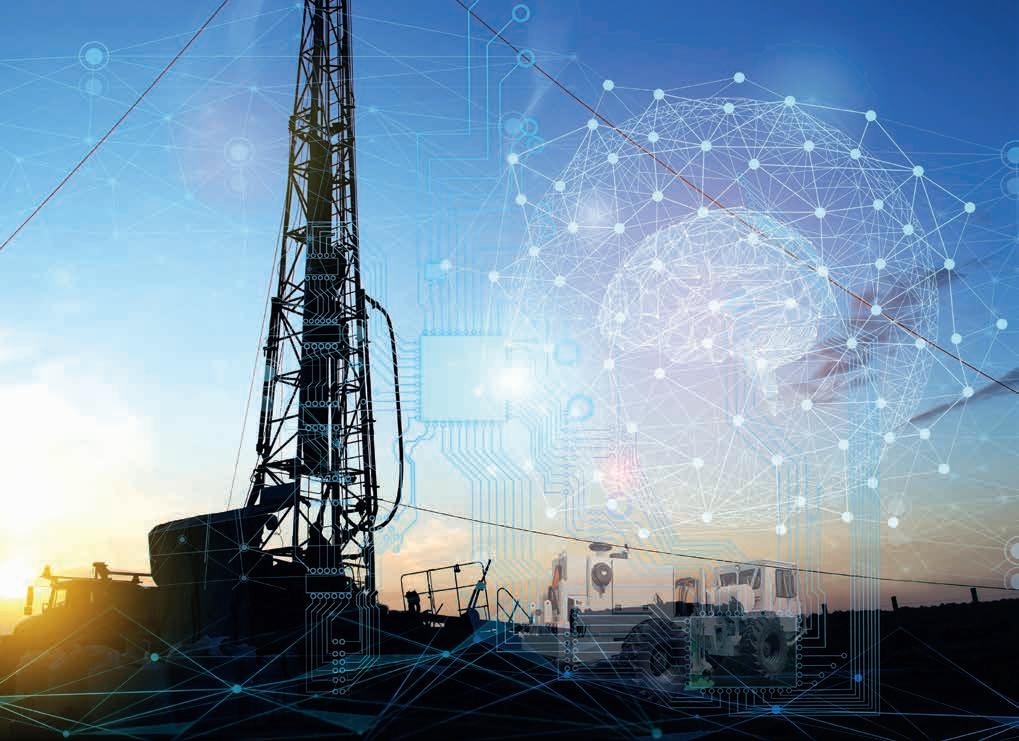
nical programme is 15 March. Visit the event website for more information on topics and guidelines: https://eage.eventsair.com/seventh-eage-borehole-geophysics-workshop/.
The Seabed Seismic Workshop in Milan on 18-20 September 2023, themed ‘A New Era for Seabed Seismic’, will focus heavily on discussing new ideas and showcasing methodologies of acquiring, processing and interpreting seabed seismic data.
Seabed seismic technologies have evolved significantly over the last few decades. In the last few years they have gained a substantial market share in the offshore acquisition business. Due to the advent of automation for both deployment and retrieval operations, this technology leverages novel concepts to achieve high productivity and improved cost and quality. New ideas have emerged related to acquisition designs, ranging from hybrid field configurations using seabed sensors and streamers, to replacing conventional nodes with autonomous underwater vehicles.
The borehole geophysics event will again bring together geoscientists from operating companies, contractors, equipment suppliers, academics and all those interested in promoting borehole geophysics in all its forms.
Borehole geophysics measurements have been used for decades in the oil and gas industry to assist geoscientists in key applications, including accurate well-toseismic ties, velocity model calibration for seismic processing and interpretation, drilling assistance and reservoir monitoring.
As the world moves to cleaner, renewable energy, industry is looking for more cost-effective solutions to monitor reservoirs in a growing number of oil and gas field scenarios, particularly in sectors outside the oil and gas industry, such as CO2 sequestration, gas storage (including
monitoring projects. In parallel, significant developments have taken place in surface seismic acquisition using nodes and DAS sensing, with many surveys being recorded simultaneously downhole. The multiple synergies between surface and downhole monitoring technologies make them increasingly attractive for reservoir imaging and monitoring projects.
A novel feature of the workshop will be a joint session with participants in the EAGE Seabed Seismic workshop to allow some topics of common interest to be explored. This should prove rewarding for all those participants wanting to keep abreast of rapidly evolving related technologies. All this is made possible thanks to the support of Aramco as Platinum Sponsor.
The deadline to submit abstracts for the Borehole Geophysics workshop tech-
Moreover, innovative software has been developed to complement and capitalise acquisition scenarios in order to unveil high-resolution and high-quality subsurface images for accurate reservoir characterisation, reducing risks and optimising drilling operations. In addition, seabed seismic technologies can easily address new market opportunities and challenges, such as CO2 sequestration and monitoring.
The Technical Committee invites practitioners, innovators and industry experts to contribute to this workshop and share their achievements and challenges, which will help to bring all the attendees up to speed on seabed seismic acquisition, processing and interpretation.
Keep an eye on https://eage.eventsair. com/second-eage-seabed-seismic-today-workshop for updates on EAGE Seabed Seismic Today Workshop set to take place in Milan, Italy.
Submit your abstracts before 31 March 2023 in line with the workshop theme ‘A New Era for Seabed Seismic.’
6 FIRST BREAK I VOLUME 41 I MARCH 2023 EAGE NEWS
The Seventh EAGE Borehole Geophysics Workshop focuses on ‘Technologies for securing a reliable and varied energy supply’.
European IOR symposium extends scope to reflect transitions in energy landscape
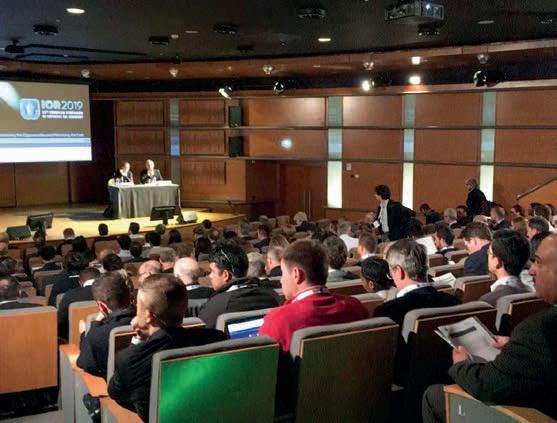

IOR+ is the new name being introduced for the longstanding European Symposium on Improved Oil Recovery, which has been organised under the auspices of the EAGE since 1991.
Through this change, the current Scientific Committee for the symposium wants to ensure they are able to address future and emerging challenges for the energy industry and academic world. The plus symbol of IOR+ reflects the transitions happening in the energy landscape epitomized in the new symposium theme, ‘Innovative and Optimised Resource Utilisation’.
The European Symposium on Improved Oil Recovery, the event first came into EAGE’s orbit in 1991 when the sixth symposium was organised in Stavanger. The five earlier versions were called European Symposium on Enhanced Oil Recovery and were held throughout the 1980s when enhanced oil recovery was a key focus area of the industry. That name change followed the sentiments in the industry in the low oil price environment of the time. Then it was still considered important to share results and experiences between different operators and scientists on the challenges and fundamental understanding faced in improving oil recovery. The event was held in different places across Europe and even in Egypt. The last
symposium (21st) was as online event due to the Covid pandemic.

This new event name better aligns with the EAGE’s stated objectives ‘to promote the development and application of geosciences and related engineering subjects, to promote innovation and technical progress and to foster the communication, fellowship and cooperation between those working in, studying or otherwise being interested in these fields’.
As usual, this year’s symposium will provide updates and results from the latest research into IOR/EOR technologies together with assessments of recent pilots and field scale deployment of IOR/EOR, showcasing the successes, technical challenges and new technologies deployed. The focus will be on extending the reach of EOR while reducing the carbon footprint of hydrocarbon recovery.
In addition, the conference will cover (re)emerging applications where IOR/EOR experience and knowledge is essential. The applications cover carbon capture (utilisation) and storage (cc(u) s) in its widest sense, hydrogen storage, and geothermal. Also included are several extended keynote presentations from global experts on topical themes.
The symposium continues to provide a meeting place for engineers, academics,
EAGE Online Education Calendar
scientists, and students to present recent advances and brainstorm new ideas to improve resource utilisation in the future, whilst mitigating carbon emissions. Attendance is recommended to professionals in industry as well as academics and new researchers who are interested in maximising economic subsurface resource utilisation while minimising carbon footprint. The breadth of material covered will give an overview of the current trends and potentials, as well as an improved scientific understanding of techniques deployed.
The 22nd symposium on Innovative and Optimised Resource Utilisation (IOR+) will be held on 2-4 October 2023, in The Hague, Netherlands.
* EXTENSIVE SELF PACED MATERIALS AND INTERACTIVE SESSIONS WITH THE INSTRUCTORS: CHECK SCHEDULE OF EACH COURSE FOR DATES AND TIMES OF LIVE SESSIONS
FIRST BREAK I VOLUME 41 I MARCH 2023 7 EAGE NEWS
INFORMATION
WWW.EAGE.ORG
WWW.LEARNINGGEOSCIENCE.ORG.
START AT ANY TIME VELOCITIES,
SELF PACED COURSE 6 CHAPTERS OF 1 HR GEOSTATISTICAL
SELF PACED COURSE 8 CHAPTERS OF 1 HR CARBONATE RESERVOIR CHARACTERIZATION,
SELF PACED COURSE 8 CHAPTERS OF 1 HR 28 FEB3 MAR GEOLOGICAL INTERPRETATION OF GEOPHYSICAL DATA FOR MINERAL EXPLORATION BY PROF MICHAEL DENTITH IOSC 4 HRS/DAY, 7 MODULES 14-17 MAR ROCK PHYSICS AND COMPUTATIONAL GEOPHYSICS BY JOSÉ M. CARCIONE IOSC 4 HRS/DAY, 2 PARTS 20-22 MAR SUB-SURFACE UNCERTAINTY EVALUATION (SUE)
MANISH AGARWAL IOSC 4 HRS/DAY, 6 MODULES 23-24 MAR MEDIUM AND LOW-GRADE GEOTHERMAL ENERGY: GEOSCIENCE AND GEOMECHANICS BY
GRANT
MAURICE DUSSEAULT IOSC/EET 4 HRS/DAY, 8 MODULES 29-30 MAR MACHINE LEARNING IN GEOSCIENCES
FOR THE FULL CALENDAR, MORE
AND REGISTRATION PLEASE VISIT
AND
IMAGING, AND WAVEFORM INVERSION - THE EVOLUTION OF CHARACTERIZING THE EARTH’S SUBSURFACE, BY I.F. JONES (ONLINE EET)
RESERVOIR MODELING, BY D. GRANA
BY L. GALLUCCIO
BY
PROF
WACH AND PROF
BY GERARD SCHUSTER IOSC 4 HRS/DAY, 2 PARTS
Technical programme presentation during IOR2019 in Pau, France.
Chapter warms to geothermal talk

Dong Zhang (EAGE Local Chapter Netherlands) writes: As winter was getting close, our Chapter held a warm live event at EBN Utrecht in November on the Dutch SCAN geothermal project. Gitta Zaalberg and Johannes Rehling from EBN, who are in charge of the SCAN project and related geophysical processing, were invited as our speakers.
Zaalberg started her talk by reminding the audience of the heat transition in the Netherlands, and how district heating using a fully renewable source
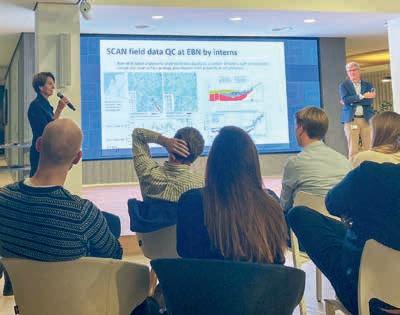
with long-term availability would be the key to this energy transition. She said the Ministry of Economic Affairs and Climate in the Netherlands was funding the SCAN project which aims to accelerate the development of geothermal energy by filling the subsurface data gaps. This will allow the drilling of wells from 500 to 4000 m deep. The SCAN project is executed together by EBN and TNO. All SCAN project results constitute a wealth of new and improved subsurface seismic data, which are immediately released and available to the public.
Rehling followed Zaalberg introduction of the SCAN project with more details about the corresponding seismic data acquisition and processing. He elaborated on the SCAN programme’s three key components, i.e., acquisition of regional 2D seismic data, reprocessing of existing 2D seismic data, and data well drilling campaigns. More specifically, Johannes explained a cross-spread acquisition geometry, where shots and receivers are laid per-
pendicular to each other. EBN considers this cross-spread acquisition a very useful data supplement to any local 2D acquisition. SCAN field data QC related to the groundwater table and 2D reprocessing on the vintage data were also demonstrated in detail. In the end, an enthusiastic discussion ensued about data availability and the data processing workflows necessary.
You can stay informed about our chapter activities through the LinkedIn page https://www.linkedin.com/ groups/13690220/ and become a member by sending an email to eageLCNetherlands@gmail.com.
Petroleum Geostatistics 2023 in Porto to explore wider range of energy resources
EAGE Petroleum Geostatistics Conference returns in 2023 following various successful editions in Biarritz (France)

in 2015 and Florence (Italy) in 2019. The fifth in the series will take place in Porto, Portugal on 27-30 November under the theme ‘Towards a sustainable era of geoenergy’.
The conference will once again bring together professionals and scientists from various fields to exchange knowledge and showcase new methods and applications related to geostatistics. It is an arena for academics, petroleum industry and service companies to strengthen ongoing activities, exchange new ideas and initiate collaborations. We are looking to spark new waves of geostatistics capabilities addressing the challenges related to carbon neutrality and the energy transition,
while leveraging on the strong expertise in petroleum geostatistics.
Especially, for this edition, we encourage submissions regarding new topics, including CO2/H2 geostorage, geothermal applications, near-surface applications, and other energy resources, but also expect to see the recent advancements in petroleum geostatistics.
Submit your abstracts before 15 August 2023 to contribute to this exciting technical programme. Join us in Porto, Portugal and register today for an early bird rate till 1 October 2023. More information on the event including sponsoring opportunities can be found on www.petroleumgeostatistics2023.org.
8 FIRST BREAK I VOLUME 41 I MARCH 2023 EAGE NEWS
Johannes Rehling during his talk on the SCAN seismic data processing.
Gitta Zaalberg and Johannes Rehling during the discussion with the audience about the SCAN project.
The Petroleum Geostatistics Conference attracts a great number of abstracts from a range of topics such as geomodelling, seismic reservoir characterisation, and machine learning.
EAGE Digital 2023 sets sights on technology innovation

The third edition of the EAGE Digitalization Conference and Exhibition is finally here on 20-22 March at ExCel London. This is the Association’s flagship event for discussing how digital technology will challenge all energy industries including oil and gas during the coming period of rapid energy transition.
Theme for this year is ‘Technology Driving Innovation for the Future’. The programme features both technical and strategic streams addressing the role of digital and technological innovation as enablers of industry transformation needed through the energy transition.
The Technical Programme offers a look into the many digitalization initiatives across the intersection of geoscience, engineering, data science and energy transition. Sessions will include oral and poster presentations across such topics as






machine learning, applied analytics, data management, green digitalization, project prospects and much more. There will also be dedicated technical sessions on bringing OSDU into operations and how digital can be the key to successful CCS and energy transition.
The Strategic Programme will bring together thought leaders to address a broad range of organisational and leadership issues through keynote talks, panels and roundtable discussions. Speakers will include senior executives from traditional oil and gas operators and service companies as well as leading consultants and prominent technology companies. Timely topics such as leadership and the business case for innovation including digitally enabled workflows will illustrate the new emerging energy landscape.
The Exhibition will once again wel-



come energy operators, service providers and technology companies to showcase their latest technologies and solutions to the problems raised by digital transformation.
Delegates are also invited to stop by the EAGE Hub for a full immersion in EAGE’s current and upcoming offering in the digital world. There you will meet the community leading the way for geoscientists and engineers in the digital transformation, get engaged with our local chapters, explore the education programmes to strengthen your digital skills, discover opportunities to publish your research in one of our journals and try speed mentoring which is a great way to enrich your path through the event by connecting with another peer.
Visit eagedigital.org to learn more about all what this year’s event has to offer. You can still register to join.
Bahrain GeoHack puts explorationists to the test
A second GeoHack was hosted during the second EAGE Subsurface Intelligence Workshop held last October in Manama, Bahrain challenging participants to create machine learning solutions for exploration tasks in processing and interpretation.
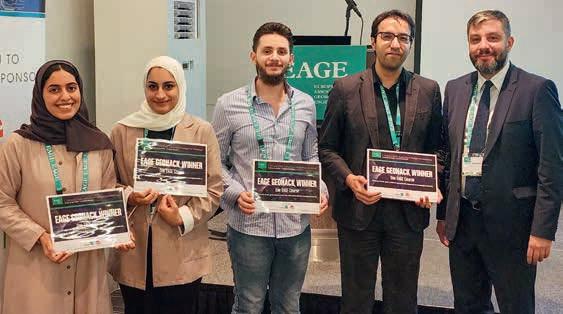
During the two days, with the help of hackathon curators over 30 people joined the contest to build AI algorithms on dedicated GPU-servers for first break picking and horizon detection. Starting conditions were equal for everyone using opensource baseline Python code and labelled data to train models. The GeoHack teams were competing on public data and the final solution was tested on a private dataset. All submissions were graded automatically and updated online on the
leaderboard. Final top marks were scored by members of Aramco, Tatweer and Aramco Innovations (Moscow branch).
To support the event Data Analysis Center introduced SeismicPro and SeismiQB open source libraries that simplify training machine learning models, so that by the end of the GeoHack all participants had a working solution tested on actual field data. Such an approach contributes to solving an important issue of AI applications, i.e., knowledge transfer from research into production.
This second EAGE Subsurface Intelligence Workshop was co-chaired by Abdulmohsin Mansor (Aramco) and Mohamed Abdullah (Tatweer). Looking ahead the third GeoHack will be
enhanced by 3D subsurface visualisation, and even more complex and challenging tasks. Stay tuned for the next edition announcements!
FIRST BREAK I VOLUME 41 I MARCH 2023 9 EAGE NEWS 8 MARCH EAGE STUDENT WEBINAR ON RESERVOIR MONITORING ONLINE 8 MARCH SELECTION OF THE TEAMS FOR THE SECOND ROUND EAGE LAURIE DAKE CHALLENGE 2023 ONLINE 16 MARCH EAGE STUDENT E-SUMMIT ONLINE 23 MARCH APPLICATION EAGE ONLINE GEOQUIZ ONLINE EAGE Student Calendar FOR MORE INFORMATION AND REGISTRATION PLEASE CHECK THE STUDENT SECTION AT WWW.EAGE.ORG
GeoHack - Winner of the Horizon Picking - Mustafa Al Ibrahim (Saudi Aramco), Zahra Al Khabbaz (Tatweer Petroleum), Mariam Assadeq (Saudi Aramco), Ezdeen Raed Ibrahim (Tatweer Petroleum).
OUR JOURNALS THIS MONTH
EAGE’s comprehensive education and learning package is here for you
EAGE recognises high-quality training and education as tools that guarantee your professional success in a rapidly changing industry. As education becomes more affordable, we aim to provide a holistic learning path to our members worldwide, bringing them the latest trends in geoscience and engineering through online education offerings delivered in multiple formats, along with engagement opportunities and unique experiences.
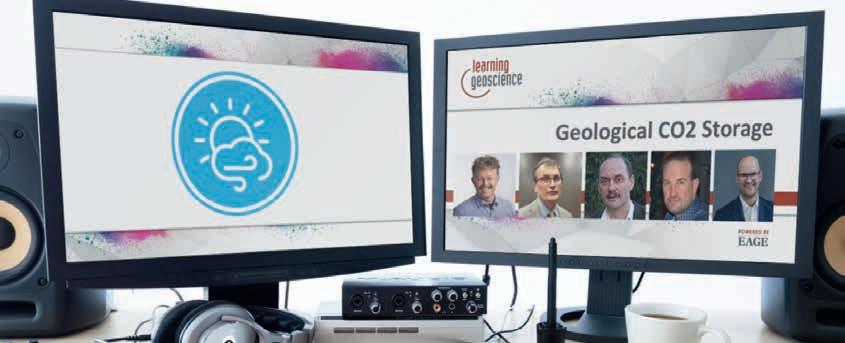
Geophysical Prospecting (GP) publishes primary research on the science of geophysics as it applies to the exploration, evaluation and extraction of earth resources. Drawing heavily on contributions from researchers in the oil and mineral exploration industries, the journal has a very practical slant. A new edition (Volume 71, Issue 3) will be published within March, featuring 9 articles.
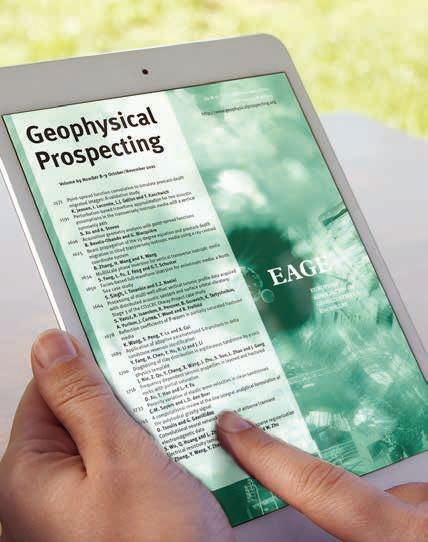
Editor’s Choice articles:
• Umbilic points of slowness surface in elastic orthorhombic media —
Shibo Xu
• A matrix-free variant of the distorted Born iterative method for seismic fullwaveform inversion — Kui Xiang
• The effect of clay and contacts between sand grains on the elastic properties of sandstones —
Colin Michael Sayers
CHECK OUT THE LATEST GP
One of the current challenges being faced by the oil and gas industry is energy transition. This is why we are channelling our efforts towards the development of education programmes that address the
Additionally, in collaboration with the Decarbonization and Energy Transition (DET) Technical Community, the Education Committee is working on mapping skills for energy transition, aimed at the identification of needed technical abilities and connecting them with available courses and trainings.
It is further important to highlight the creation of a coaching programme dedicated to the development of soft-skills and practices that will make members more competitive in accessing opportunities provided by energy transition, as well as the upcoming interactive session ‘Skills for energy transition’ being presented at the Annual Meeting in Vienna.
issues involved. EAGE has created the Energy Transition category and label in its Short Course Catalogue, adding novel and up-to-date courses focused on energy transition applications.
An example of these offerings is the Extensive Online Course ‘Geological CO2 storage’ with the instructors Andreas Busch, Eric Mackay, Florian Doster, Martin Landro, and Philip Ringrose. With more than 100 students in 2022, this course was successful evidence of the relevance that energy transition topics, such as carbon capture and storage, are having in the geoscience and engineering fields. ‘It made me aware of the critical issues around CO2 storage, allowing me to have an informed opinion and to engage in conversations on this topic’ said Simon Lange (OMV), who had the chance to take this course.
New education programmes are continuously being created, responding to the industry’s needs and latest advancements, not only in Energy Transition, but also in Geophysics, Near Surface, Geology, Engineering, Reservoir Characterisation, Data Science, and Training and Development. Why not start a course in 2023? Get ready to update your knowledge with courses that adjust to your time availability and learning needs.
You can check out the multiple formats we have on offer:
Self-paced online courses
These are pre-recorded courses that you can complete with your own schedule, even defining the amount of time dedicated to each lesson. As they don’t have fixed start dates, you may join these programmes anytime.
10 FIRST BREAK I VOLUME 41 I MARCH 2023 EAGE NEWS
A. Busch, E. Mackay, F. Doster, M. Landro, and P. Ringrose are instructors of CO2 storage course.
The current courses available in this format are ‘Velocities, Imaging, and Waveform Inversion: The Evolution of Characterising the Earth’s Subsurface’ by Ian Jones (Brightskies Geoscience); ‘Carbonate Reservoir Characterization’ with Laura Gallucio (Badley Ashton, UK), and ‘Geostatistical Reservoir Modelling’ by Prof Dario Grana (University of Wyoming, US).
Extensive online courses
The programmes provide a deep-dive learning experience with self-paced online materials complemented by regular interactive sessions with the instructor. Participants will have access to the course material for a period of one month after the programme’s start date to complete all the requirements and achieve a certificate.
In addition to the Extensive Online Course ‘Geological CO2 storage’, already mentioned, other courses are on offer, such as ‘Developing Deep Learning Applications for the Oilfield: From Theory to Real World Projects’ by Bernard Montaron (Fraimwork SAS), ‘Introduction to Machine Learning for Geophysical Applications’ with Jaap Mondt (Breakaway), or ‘Data Science for Geoscience’ by Jef Caers (University of Stanford).
Interactive online short courses
The courses are designed to be easily digested over the course of two to four days.
Participants will take four-hour real-time lessons each day, having the possibility to interact with the instructor and ask questions. These courses also include some of the most popular EAGE Education Tours (EET), such as the recently added ‘Basics of Carbon Capture and Storage’ by Prof Michael H. Stephenson, a well-known communicator of science whose book ‘Returning Carbon to Nature’ is widely seen as the go-to introductory text on CCUS. The programme covers the role of CCS within decarbonisation as an aspect of earth system science; how CO2 is captured in industrial processes and how it can be used industrially; the regulations and social licence for CCS, and more. You may also join this course in an in-person format during the 84th EAGE Annual.
If you would like to check the entire list of offered courses, you are invited to go to our interactive Short Course Catalogue in Learning Geoscience, EAGE’s online education platform, where you can search for programmes of your interest filtering by topics, instructors, new courses, formats, and more.
Education packages
We have seen a growing interest in our education offerings, with people attending multiple courses throughout the year. To help you save on registration fees and better organize your learning path, you can choose to purchase Education Packages, applicable to all EAGE courses. If
you select this option, you may save up to 50% on registration fees compared to individual courses! We offer you packages of three, five or ten credits that can be used in a 12-month period.
Free learning resources
EAGE members also have access to free learning resources, flexible formats that allow them to address core building-blocks for topics that span across the entire geoscience and engineering field in less than two hours! The Distinguished Lecturer Programme (DLP) and E-Lecture webinars are high quality and state-of-the-art lectures from the best presentations delivered at the EAGE conferences. In both cases, EAGE aims at encouraging the exchange of knowledge in geosciences and the development of connections among professionals.
Other free learning resources you can check are our ‘How-to-Videos’, in which EAGE experts advise on the best practices for a productive scientific exchange. Make the most of the video series ‘How to submit a good abstract’, ‘Present to a live audience’, ‘Chair a session’ and ‘Publish your research’, to enhance your oral and writing skills.
If you have any questions about our education offerings, feel free to reach out to us at education@eage.org.
ADDITIONS THIS MONTH
The 5th Asia Pacific Meeting on Near Surface Geoscience & Engineering will take place on 6-9 March in Taipei, Taiwan. 65 abstracts will be presented becoming available on EarthDoc two weeks prior to the event.
On 20-22 March the 3 rd EAGE Digitalization Conference and Exhibition, one of our flagship events, will take place in London, UK. We are expecting over 100 presentations that will be accessible on EarthDoc two weeks before the conference.
A new issue of Geophysical Prospecting will be published in March.
And lastly, don’t forget to check this month’s open access content.
FIRST BREAK I VOLUME 41 I MARCH 2023 11 EAGE NEWS
Visit the Learning Geoscience platform
Paris venue for return of EAGE’s flagship energy transition conference in November
Following the success of the third EAGE Global Energy Transition Conference and Exhibition (GET 2022), we are excited to announce that the next edition of this leading conference will be held in Paris from 6-9 November 2023. Host support for the conference will come from CGG.
The GET conference is EAGE’s flagship event addressing the urgent challenges and needs to support energy transition and accelerate the move towards net zero energy systems. This special platform seeks to bring together researchers and practitioners across a
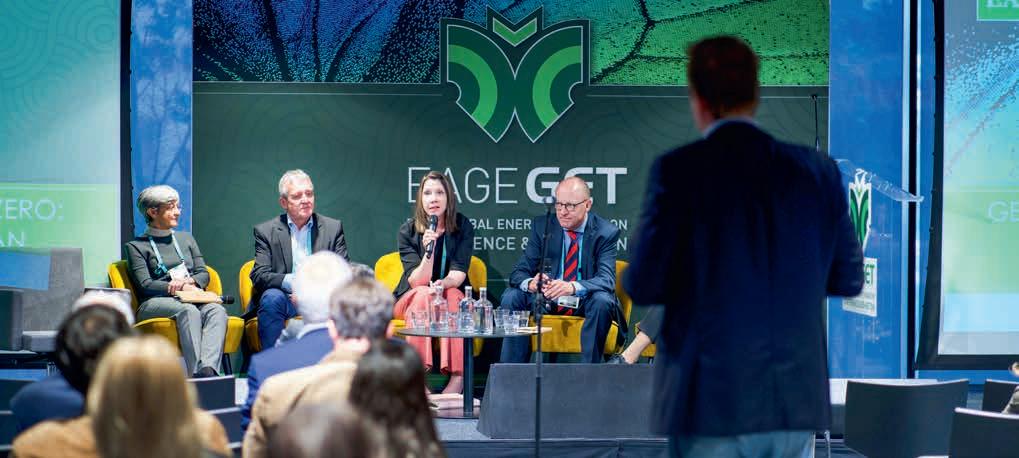
within the energy and mining industries. The four-day conference will include an extended technical programme, alongside a policy and strategy programme, featuring key experts, energy leaders and other prominent speakers to discuss high-level topics around the complex challenges associated with future energy systems.
One of the highlights of the GET conference is the selection of coaching and interactive sessions, which foster the exchange of thoughts, shared learning and views beyond the more traditional conference format. Next to the conference
the energy producers of today. I see that there is a lot of crossover in technology between this industry and the geothermal industry and the CCUS industry, carbon capture, utilisation and storage, but also the hydrogen industry where you have to have hydrogen transport and distribution infrastructure, underground hydrogen storage, production of blue hydrogen using CCUS. What is very important is that there are a lot of knowledge and skills already available that can be used for energy transition. There is also is the opportunity to develop new skills for the future. So, I am very much looking forward to seeing how EAGE addresses the different segments of the future energy system.’
The exhibition at GET 2023 will be a specialised marketplace for companies to showcase their latest technologies, innovative services, and geophysical monitoring and data management solutions.
wide range of technical disciplines to share and exchange knowledge together with key policy, strategy and business stakeholders.
By joining the GET 2023 conference in person, participants have a valuable opportunity to connect with a fast growing and diverse community sharing insights into the latest trends and developments
programme during the event days, GET 2023 also offers an extensive social programme for participants to network with fellow colleagues in a relaxing setting.
Jeroen Schuppers, deputy head of unit for clean energy transition, European Commision, DG Research and Innovation mentioned at the 2022 conference: ‘In general, the oil and gas majors of the past are

This year the Call for Abstracts topics list for GET 2023 has been expanded to reflect the evolution of the field and attract more participants from non-technical disciplines. Submission of abstracts are invited on topics including: Offshore wind energy, CCUS, Energy storage, Geothermal energy, Integration, Cross-uses, Environment and sustainability, Solution and society, Geo-resources in the future, and Education and training.
If you are interested in submitting an abstracts for GET 2023, we encourage you to submit your abstracts no later than 15 August 2023. Visit www.eageget. org for more information on the topics, submission guidelines and all this year’s event has to offer.
12 FIRST BREAK I VOLUME 41 I MARCH 2023 EAGE NEWS
DONATE TODAY!
The EAGE Student Fund supports student activities that help students bridge the gap between university and professional environments. This is only possible with the support from the EAGE community. If you want to support the next generation of geoscientists and engineers, go to donate.eagestudentfund.org or simply scan the QR code. Many thanks for your donation in advance!
GET offers an exciting selection of panel discussions during the 3-day conference.
Personal Record Interview
Key plays that made a geologist musician
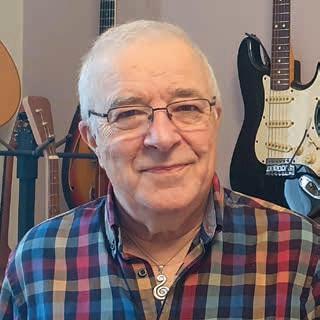
Now semi-retired, Tony Doré sustained a distinguished exploration geologist career, mainly high-profile executive roles at Equinor (Statoil) plus numerous publications, while also starring as songwriter, vocalist, and instrumentalist with cult folk band Tony, Caro & John (TCJ). His professional honours include an OBE, honorary doctorate (Durham University) and lifetime achievement award (GeolSoc). The band continues to perform and record.
Family settled in Derby?
My Mum was Derby born and bred. Dad was a demobbed serviceman of AngloFrench origin, bringing our name’s acute accent as his one link to France. He’d lost his family in WW2 and gone off to fight in the Royal Naval Commandos. Mum was his pen friend during the war, and the relationship became permanent. We lived on a working-class council estate, populated mainly by ex-servicemen and their families.
Geology or music, which came first?
Definitely geology! Mum and Dad often took me hiking in Derbyshire. I was about eight, and started picking up fossils and minerals and asking my parents what they were. Being good parents, they rushed out to find me books. They probably assumed it was a passing fad, but many decades later I’m as keen as ever. There was always music in our house. Dad played piano accordion by ear and sang beautifully. I started in my early teens, inspired by the Beatles, Dylan and folk music. My first instrument was a plastic Elvis Presley guitar from Woolworths, which lasted about 6 months until someone accidentally sat on it…
TCJ trio and first record?
In the 1970s, while doing my PhD, I was living in a small London flat with my musical friends John and Caro. We recorded a limited-edition LP in our living room (99 copies only) which we sold at
gigs and folk clubs, then forgot about it as our careers moved on. Imagine our surprise when, in the early noughties, a German label contacted us wanting to re-release the record! Apparently, it had a cult following and had become a collector’s item. They’d even invented a genre for us – psych-folk. Since then, the album’s been re-released four times, along with some newer music.
Career journey from North Sea with BNOC?



BNOC was the UK’s attempt to form a state oil company. It didn’t last long, but they gave me my first job, and first North Sea experience. The Eighties and early Nineties were mainly spent in Stavanger, Norway with Conoco. Our son and daughter were born there, and I almost became Norwegian. I joined Statoil (later Equinor) in 1994, working in London and Houston until my retirement in 2019. I spent some 25 years in management, the biggest job probably being VP Exploration Americas. However, I doggedly kept my technical side alive, largely through publications and contacts with academia.
Projects most proud of?
Co-leading my company’s re-entry into the Gulf of Mexico, in the face of significant difficulties, must be up there. But the projects I think of most fondly are the mega-regional studies on the NE Atlantic margins, the Arctic and worldwide cratonic basins. I’ve always been better at big-picture thinking than detailed analysis, so these projects suited me perfectly. Because I was
allowed to publish, they helped build whatever reputation I have in regional geology.
What are you working on now?
Despite being semi-retired, my geological caseload is quite full. I consult and act as Euro-representative for the Energy & Geoscience Institute, Utah. I’m also, among other things, currently working with a Bergen University team on the Permian-Triassic extinction event and its effect on Arctic sedimentation, and with a group of like-minded enthusiasts on the opening history of the Gulf of Mexico.
Do geology and music relate?
I’ll spare you the obvious plays on the word ‘rock’. But really, I don’t separate them in my mind. Both require creativity and imagination. Many geologists also seem to moonlight as artists of some kind. The best boss I ever had was also a worldclass drummer. In the same team we had two incredible guitarists. So of course, we formed a band.
Does the band play on?
TCJ have a small but dedicated cadre of worldwide followers, so every time I think things are calming down, another resurgence occurs. The most recent was a five-part podcast documenting the strange journey of our band, which actually dented the podcast charts. To mark its release this year, we did a concert in January to a young and enthusiastic audience. Was this our swansong? Who knows? Never say never.
FIRST BREAK I VOLUME 41 I MARCH 2023 13 PERSONAL RECORD INTERVIEW
Tony Doré
Make sure you’re in the know EAGE MONTHLY UPDATE



































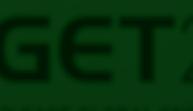




















































LAST CHANCE TO REGISTER!
15 March 2023
Late Breaking Poster submission deadline

84th EAGE Annual Conference & Exhibition

15 March 2023

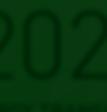


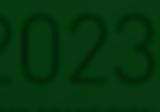

Call for abstracts
Seventh EAGE Borehole Geophysics Workshop
IMPORTANT DEADLINES


ALL ACCESS PASS

ONE PASS FOR YOUR FULL EVENT EXPERIENCE!
31 March 2023
Call for Abstracts
Second EAGE Seabed Seismic Today Workshop, A New Era for Seabed Seismic

Gain access to the full conference & exhibition, social events, workshops, field trips, short courses and hackathon ALL FOR ONE REDUCED FEE!
CHECK

OUT THIS
14 April 2023

Call for Abstracts
14 April 2023 EAGE





































































































First EAGE Conference on Deepwater Equatorial Margin




16 April 2023

















Call for Abstracts
2nd EAGE Workshop on Fluid Flow in Faults and Fracture


25 April 2023
Call for Abstracts
Near Surface Geoscience Conference & Exhibition 2023






















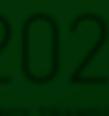
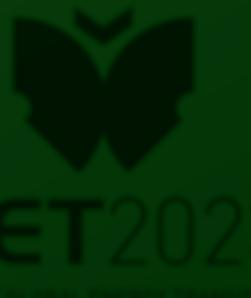










6-9 NOVEMBER 2023 • PARIS, FRANCE
YOUR ABSTRACTS!
14 FIRST BREAK I VOLUME 41 MARCH 2023
EAGEDIGITAL.ORG 20-22 MARCH 2023 I LONDON, UK
SUBMIT
CALL FOR ABSTRACTS IS OPEN! EAGENSG.ORG MONTH’S
ARTICLES


































































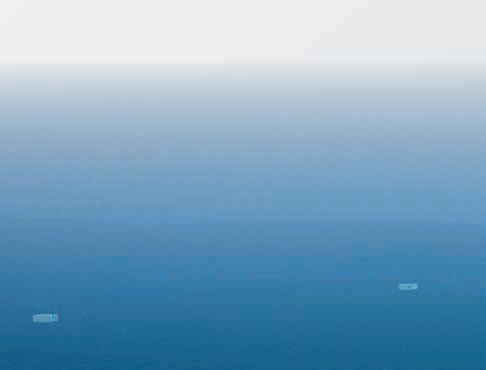
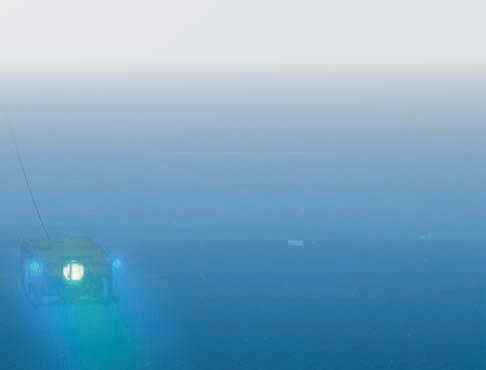
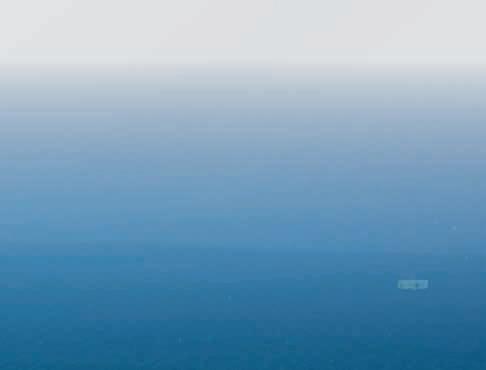

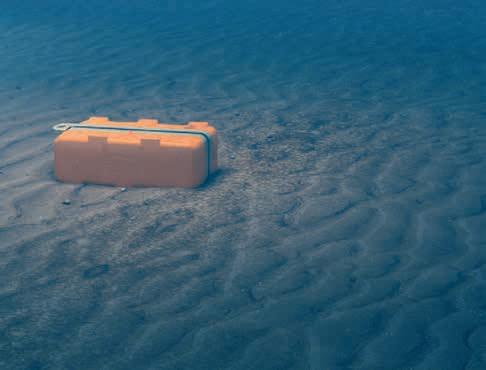
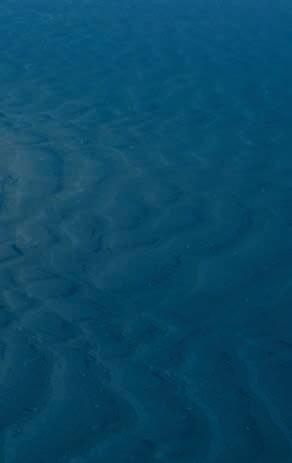




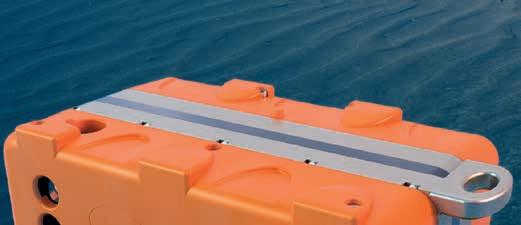
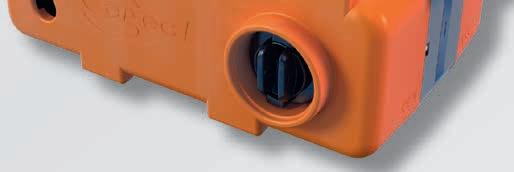






A STEP CHANGE IN IMAGE RESOLUTION www.sercel.com ANYWHERE. ANYTIME. EVERYTIME. Nantes, France sales.nantes@sercel.com Houston, USA sales.houston@sercel.com The only seabed node equipped with QuietSeis® MEMS sensors!
CROSSTALK
BY ANDREW M c BARNET
Keeping a grip on reality


The new ChatGPT chatbox from OpenAI (backed among others by Elon Musk and Microsoft), as well as other competing technologies, looks like the beginning of new era for artificial intelligence (AI) in everyday life, especially when added to popular text-to-image conversion software such as DALL-E-2, Midjourney and Stable Diffusion.
Doubtless most readers have already given ChatGPT a try as it is still accessible free on an experimental basis and reputedly attracted one million subscribers in less than a week when launched last November.


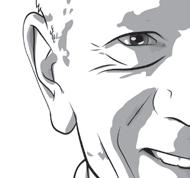


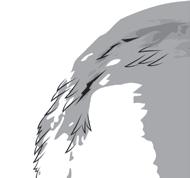

Essentially some very powerful tools have introduced a different way of gathering and processing Internet information compared with traditional search engines such as Google, Yahoo, Bing, etc. The transformational aspect of ChatGPT, as a large language model, is its power to deliver (text and audio) answers to just about any question in a conversational and highly plausible style, easily mistaken for a human. It can also undertake all sorts of tasks such as write emails, essays, poetry of sorts, blogs, marketing material, answer customer business queries, and to a limited extent generate lines of code.
But we know this advance in AI has a number of caveats. The most obvious shortcoming is that it is subject to the set of data on which it was trained, massive though this is, and does not have the same understanding of the input and output as humans do. Also, as of now, ChatboxGPT can only access data up to 2021, so is not current, but that hurdle will doubtless be overcome in time.
More fundamentally, it just gets things wrong. Mistakes are known as ‘hallucinations’. Google’s rival Bard chatbox on its introduction last month proved the point by making a factual error in its first public demo, leaving the company high-ups to explain away an overnight $100 billion loss in the share value of Alphabet, Google’s owner.


Fixing the fallibility issue is challenging, according to ChatGPT itself if you ask. It helpfully suggests that during reinforcement
learning (RL) training, there’s no source of truth; training the model to be more cautious causes it to decline questions that it can answer correctly; supervised training misleads the model because ‘the ideal answer depends on what the model knows, rather than what the human demonstrator knows’. Other points it makes are that the model ideally would ask clarifying questions when the user provides an ambiguous query. Instead, current models usually guess what the user intended. Finally it states: ‘While we’ve made efforts to make the model refuse inappropriate requests, it will sometimes respond to harmful instructions or exhibit biased behaviour. We’re using the Moderation API to warn or block certain types of unsafe content, but we expect it to have some false negatives and positives for now. We’re eager to collect user feedback to aid our ongoing work to improve this system.’
Another significant drawback for research of any sort compared with a conventional search engine is that it does not offer citable sources for the response provided. From the horse’s mouth, so to speak, ChatboxGPT explains: ‘As an AI language model, I do not have personal experiences or opinions. I was trained on a diverse range of text data, including books, articles, and websites, and generate my responses based on that training. However, I am not able to directly reference the specific sources of the information I provide in my responses. If you need to verify the information I have provided or find more information on a particular topic, I recommend conducting your own research using reputable sources such as books, academic journals, and trustworthy websites’.
This has not assuaged the fears of the educational world that students at schools and universities can freeload answers to their assignments, thereby compounding the risk of copying and pasting from the Internet, a practice to which essay markers are already on constant guard often assisted by customised detection software. Some alarmists believe that to level the playing field, take-away assignments will have to be limited and old-fashioned, invigilated exam hall tests without computers reinstated. That ship has surely

16 FIRST BREAK I VOLUME 41 I MARCH 2023
BUSINESS • PEOPLE • TECHNOLOGY
‘Fixing the fallibility issue is challenging’
sailed. Computers have now become such an integral part of education that it would be self-defeating to limit access in some way. Indeed, the banks of computers available at most schools suggests that traditional teaching methods are already adapting to a new way of learning.
Long gone are the days of rote learning the capitals of the world or significant dates in history, the emphasis these days veers towards ‘discovery learning’ especially in the sciences, to which the computer is particularly suited. Ideally, it means students construct their own understanding and knowledge of the world through experiencing things and reflecting on those experiences rather than being lectured at.
Education may be changing, nonetheless ChatboxGPT and its imitators will clearly compound plagiarism worries if students are all coming up with very similar answers. This applies equally to the review of scholarly research, already something of a nightmare. The most logical response lies in development of further detection software because AI-aided academic submissions threaten to become too sophisticated for reviewers to detect.
Catherine A Gao et al. in a pre-print (at www.biorxiv) –‘Comparing scientific abstracts generated by ChatGPT to original abstracts using an artificial intelligence output detector, plagiarism detector, and blinded human reviewers’ – describe examination of ten research abstracts from five high impact factor medical journals asking ChatGPT to generate research abstracts based on their titles and journals. The conclusion was that ‘ChatGPT writes believable scientific abstracts, though with completely generated data. These are original without any plagiarism detected but are often identifiable using an AI output detector and skeptical human reviewers. Abstract evaluation for journals and medical conferences must adapt policy and practice to maintain rigorous scientific standards; we suggest inclusion of AI output detectors in the editorial process and clear disclosure if these technologies are used. The boundaries of ethical and acceptable use of large language models to help scientific writing remain to be determined.’
ChatboxGPT also acknowledges it may produce biased responses, and that of course is a major concern. Not only are answers dictated by the data sets involved, but the creators have also intervened to eliminate the spread of abusive or inappropriate material. Advisable or not, such massaging of data gives rise to potential paranoia about hidden agendas. The answer to a question on oil industry responsibilities regarding energy transition elicited the following: ‘Climate change is no longer just a future threat – it’s a present reality, and we must take action now to mitigate its impact. The energy sector is a major contributor to global greenhouse gas emissions, and the oil industry has a critical role to play in the transition to a low-carbon economy. But so far, oil companies have been slow to embrace the energy transition, and their limited
investment in renewable energy is a cause for concern.’ Judge for yourself whether this contradicts ChatboxGPT opinion-free mantra.
The geoscience community may wonder what this all means for its professional activity, positive or negative. Rather than risk accusations of plagiarism, an excellent explanation of the issues, drawbacks and opportunities can be found on the PGS website in an Industry Insights column by PGS chief geophysicist Andrew Long entitled ‘What’s the AI behind ChatboxGPT’. He remarks that we should be focusing on the opportunities. He notes that when writing programming code and scripts, it can offer him an accelerated reference, guide, and teaching tool; ability to review flawed code/script and ask what is wrong; and provide a resource to develop supporting documentation. With regard to creating images with generative AI, Long recommends Midjourney, which he says responds to language-based requests, can incorporate provided raster images during design, and allows iterative perturbation or refinement commands.
Despite the assurances that ChatboxGPT is only a tool to assist us, you can’t escape the eerie feeling that we are getting closer to something out of our control. It becomes the familiar question of what information can you trust.
It may be unfair to decry the influence of AI on distortions which can be put down to the immaturity or inadequacy of the software involved, and may have no sinister intent although visual deep fakes have a lot to answer for. Scientific endeavour has long been subject of dubious research claims and requires constant vigilance. In Wikipedia’s ongoing ‘List of scientific misconduct incidents’, around 80 scientists, many distinguished, in a wide range of science disciplines, are cited as examples of ‘violating the standard code of scholarly conduct and ethical behaviour in the publication of professional scientific research’. Plagiarism, manipulation of images, falsifying data and outright fraud all make an appearance mostly in recent times.
Notoriously Sir Cyril Burt (1883-1971), the eminent educational psychologist and geneticist known for his studies of heritable IQ, features for faking statistics and inventing two co-authors. Amazingly Yoshitaka Fujii, a Japanese anesthesiologist was found to have fabricated data in at least 183 scientific papers, a record for the number of papers by a single author requiring retractions. Wikipedia continues to invite further entries to this hall of shame.
In 2014 Elon Musk told an MIT symposium: ‘So we need to be very careful with the artificial intelligence. Increasingly scientists think there should be some regulatory oversight maybe at the national and international level, just to make sure that we don’t do something very foolish. With artificial intelligence we are summoning the demon. In all those stories where there’s the guy with the pentagram and the holy water, it’s like yeah he’s sure he can control the demon. Didn’t work out.’
The audience reportedly laughed.
FIRST BREAK I VOLUME 41 I MARCH 2023 17 CROSSTALK
Views expressed in Crosstalk are solely those of the author, who can be contacted at andrew@andrewmcbarnet.com.
‘We should be very careful about artificial intelligence’ – Elon Musk
Pearl changes the rules of Ocean Bottom Seismic, offering better survey designs for exploration, appraisal, development, production optimisation and monitoring.
shearwatergeo.com
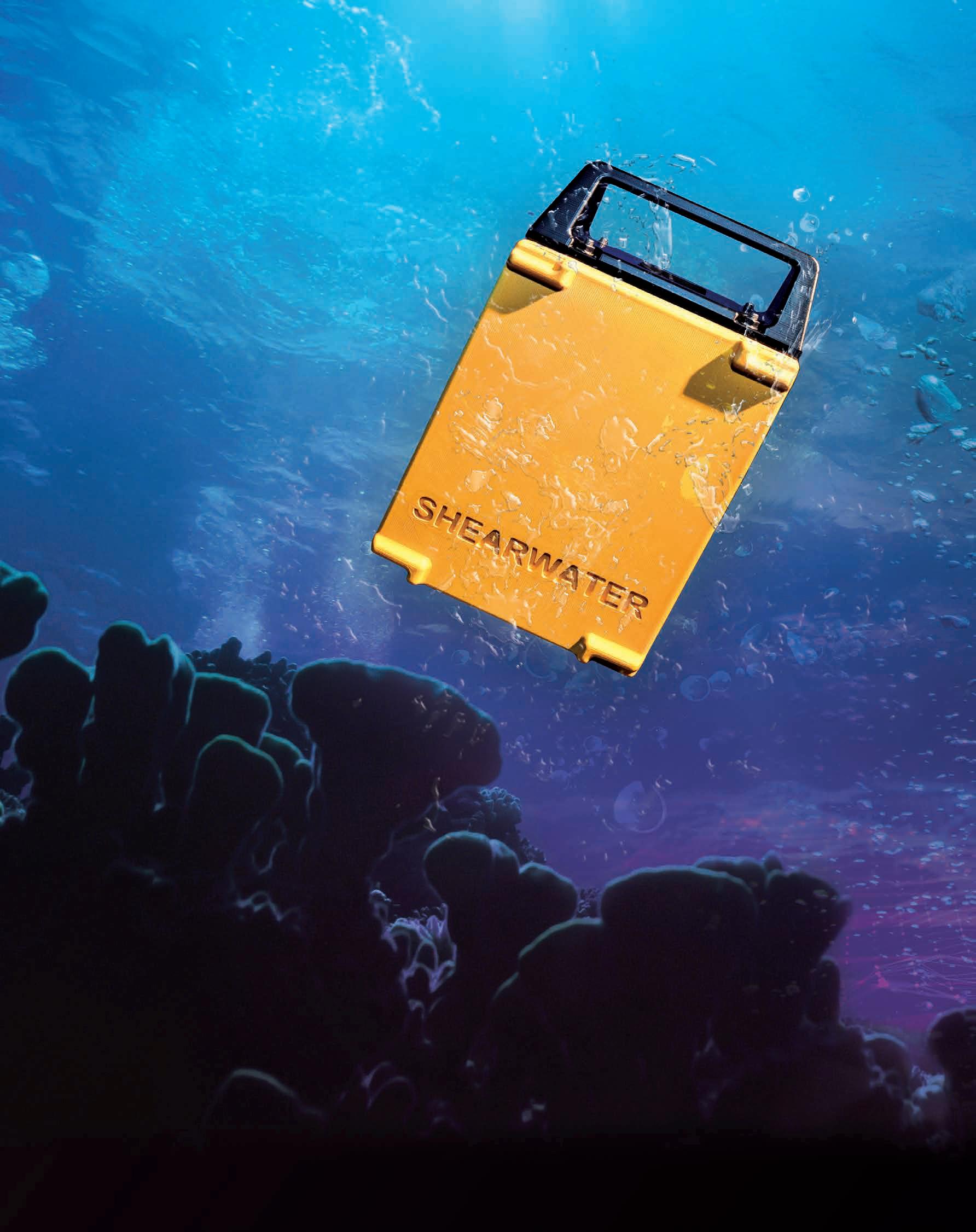
20
bp Energy Outlook points to big drop in oil consumption after 2030
Oil demand will fall dramatically as ownership of electric vehicles increases rapidly after 2030, according to the bp Energy Outlook, which explores key trends and uncertainties surrounding the energy transition to 2050.
Demand for oil will fall after its use for road transportation plateaus by 2030 and then declines in all three scenarios as road transportation is increasingly fuelled by alternative sources of energy. In all three scenarios oil consumption drops from nearly 100 mb/d at present to more than 70 under the slowest, New Momentum scenario (reflecting the current broad trajectory of the world’s energy system to get to 30% below 2019 carbon emissions), just under 40 mb/d under the Accelerated Scenario and just over 20 mb/d under the Net Zero scenario. In both the Accelerated and Net Zero scenarios, electric car ownership will rise from around 20 million vehicles in 2021 to 550 to 700 million vehicles by 2035 and 2 billion by 2050.
‘Oil demand declines over the outlook, driven by falling use in road transport as the efficiency of the vehicle fleet improves and the electrification of road vehicles accelerates. Even so, oil continues to play a major role in the global energy system for the next 15-20 years across all three scenarios,’ says the review.
Demand for natural gas will continue to rise in the New Momentum and Accelerated scenarios owing to demand in

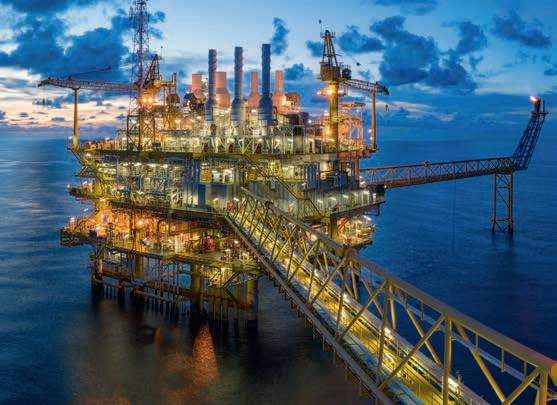
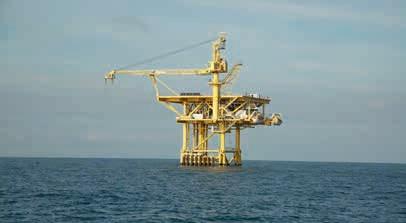
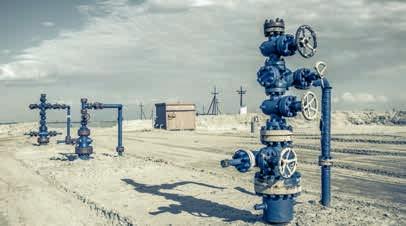
China and India, as they switch from coal to gas, as well as demand from emerging economies. In the New Momentum scenario it will rise from nearly 4000 bcm to nearly 5000 bcm. In the accelerated scenario it will rise to 4000 bcm by 2030 but then decline to around 2500 bcm by 2050. In the net zero scenario it will start falling soon to less than 2000 bcm by 2050.
‘The prospects for natural gas depend on the speed of the energy transition, with increasing demand in emerging economies as they grow and industrialise offset by the transition to lower-carbon energy sources led by the developed world,’ says the reivew.

Meanwhile, wind and solar power will increase by around 15-fold in the Accelerated and Net Zero scenarios and by around 9-fold in the New Momentum scenario. The rapid expansion of wind and solar power is largely underpinned by falls in their costs – which resume after recent short-term inflation pressures, especially in the first 10 to 15 years of the outlook. Low carbon hydrogen will increase in use from 4 mtpa in 2030 to 26 mtpa in 2050. Use of biofuels will double.
Carbon Capture Use and Storage reaches 4-6 GtCO2 in the Accelerated and Net Zero scenarios and 1 GtCO2 in the New Momentum scenario.
bp’s chief economist, Spencer Dale, said that events such as the war in Ukraine demonstrated that hydrocarbons would

continue to be an important part of the energy mix.
‘The events of the past year have highlighted the complexity and interconnectedness of the global energy system. The increased focus on energy security as a result of the Russia-Ukraine war has the potential to accelerate the energy transition as countries seek to increase access to domestically produced energy, much of which is likely to come from renewables and other non-fossil fuels. But the events also show how relatively small disruptions to energy supplies can lead to severe economic and social costs, highlighting the importance that the transition away from hydrocarbons is orderly, such that the demand for hydrocarbons falls in line with available supplies.
‘Natural declines in existing production sources means there needs to be continuing upstream investment in oil and natural gas over the next 30 years, including in Net Zero.’
The full 2023 Energy Outlook can be seen at: bp.com/energyoutlook.
FIRST BREAK I VOLUME 41 I MARCH 2023 19 HIGHLIGHTS INDUSTRY NEWS
25 PGS wins framework deal from Equinor
Trillion reprocesses 3D data in Black Sea 24
Plan to cut CO2 during oil production
Oil exploration is still required. said bp.
Academic comes up with process to cut CO2 during oil production
An academic has come up with a plan that will not only create less carbon dioxide during oil production but will also make use of the millions of orphan wells scattered throughout the US.
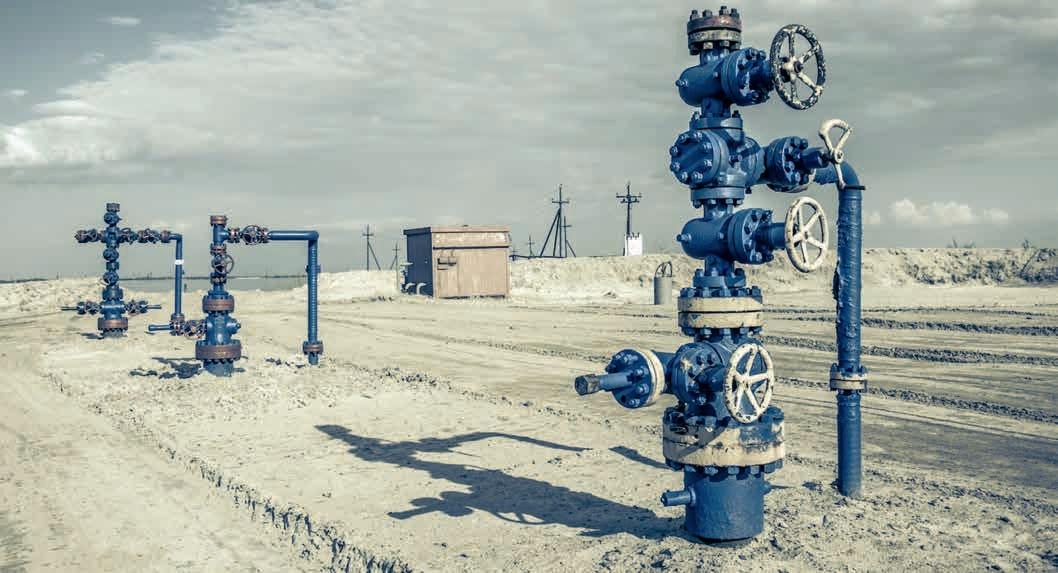
Louisiana State University (LSU) Craft & Hawkins Department of Petroleum Engineering Professor Dandina Rao’s proposed LIFT2 project would initially convert orphan wells to carbon-neutral production wells through Gas-Assisted Gravity Drainage (GAGD) process adaption, an oil recovery process that has environmental benefits since it sequesters the CO2, or the flue gas. The process yields 65-95% of the original oil in place compared to other oil recovery methods, such as Conventional Gas Injection, which yield just 5-15% and use large volumes of CO2.
The pilot project has received a grant from LSU’s LIFT2 (Leveraging Innovation for Technology Transfer) programme. ‘With the oil industry possibly venturing toward renewable energy, the question is can we continue to use fossil fuels but in an environmentally sustainable manner, and that’s exactly what our invention does,’ said Rao, the Emmett C. Wells Jr. distinguished professor.
This LIFT2 project will test the GAGD process in the field using orphan
wells. Currently, there are 131,277 documented orphan wells in the US. However, the US Department of the Interior estimates there are 3.5 million nationwide that are undocumented. Louisiana has 4601, most of which are in the northwest corner of the state in Caddo and Union Parishes.
‘Louisiana only caps 40-50 orphan wells each year because it’s costly, and there’s no budget for it,’ Rao said. ‘Companies who were responsible walked away leaving it to the state. This has been a problem. There is no monetary incentive
for companies to cap these wells, so you must create an incentive for industry to take positive action.’
Another added benefit of the project, according to Rao, is getting Louisiana’s oil production trending upward again. From 1980 to 2020, oil production in the state has gone down from 200 million barrels/year to 40 million barrels/year.
Rao and LSU petroleum engineering postdoctoral researcher Bikash Saikia hold two patents on the GAGD and singlewell-GAGD processes and are hoping to license the technology.
TGS and CGG win OBN survey in the North Sea
TGS and CGG have won an acquisition and imaging contract for a dense ocean bottom node (OBN) multi-client seismic survey in the Balder and Ringhorne areas of the Norwegian Continental Shelf (NCS).
The Heimdal Terrace OBN survey, directly north of the Utsira OBN survey in the North Sea, will span an additional 500 km2 area under receivers (AUR) to increase the contiguous multi-client OBN coverage in the region to 3778 km2 AUR. The survey area covers a mature part of the North Sea, including the Balder and Ringhorne fields, the Iving/Evra and
Enniberg discoveries, and surrounding infrastructure-led exploration (ILX) areas for potential tiebacks to existing infrastructure.
TGS will be the operator throughout the acquisition phase. CGG will apply its proprietary OBN processing and imaging technology, including time-lag full-waveform inversion, to create a high-quality 3D volume that will enhance the resolution and structural definition of the complex geology and reservoirs in the region.
Kristian Johansen, chief executive officer at TGS, said, ‘With this latest OBN survey, we continue our ongoing
commitment to support our customers with the data they need to maximise the longevity of their production activities and discover new hydrocarbon reserves in mature areas.’
The acquisition will commence in April 2023, with final processed deliverables to be completed by the end of Q2 2024.
Meanwhile, TGS has won a contract to shoot a proprietary 4D OBN survey in Walker Ridge canyon in the US Gulf of Mexico. The survey is planned to mobilise in Q3 2023 with a duration of approx. 100 days.
20 FIRST BREAK I VOLUME 41 I MARCH 2023 INDUSTRY NEWS
Orphan wells could be converted to carbon neutral production.
Norway proposes to offer 78 blocks in the Barents Sea
Norway has unveiled plans to offer energy companies a record number of oil and gas exploration blocks in the Arctic.
It proposes to offer 78 blocks to energy firms in the Barents Sea, the highest number since the Awards in Predefined Areas (APA) licensing round began in 2003.
The country also plans to offer 14 new blocks in the Norwegian Sea, bringing the total number of blocks on offer to 92.
‘To facilitate new discoveries up north is important for Europe, the country and the region,’ said oil and energy minister Terje Aasland.
The Barents Sea could contain twothirds of the oil and gas yet to be discovered off Norway, according to Norwegian official estimates.
The Norwegian Petroleum Directorate said that Var Energi’s Lupa gas discovery in the Barents Sea in December would lead to more exploration. ‘The
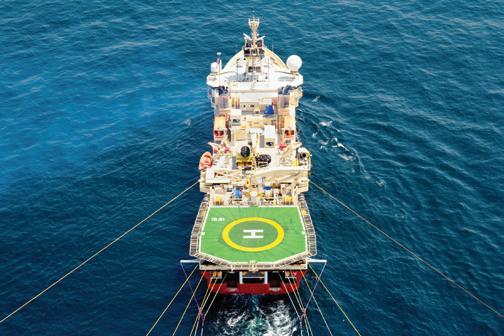
NPD expects the Barents Sea to hold significant undiscovered gas resources. A lack of infrastructure to export the gas has meant that the industry has been less eager to explore for gas in this area. More discoveries like Lupa could make development profitable, alongside investments in infrastructure to solve the transport challenge,” it said in a statement.
Waters close to the Arctic ice sheet are important feeding grounds for species including polar bears and whales. Greenpeace said most blocks on offer were ‘far north; in the Barents Sea, with some lying in what it said were areas where the ice sheet can sometimes reach during the year.
‘The government is driving policy that is the enemy of nature and the climate,’ Greenpeace Norway said in a statement.
The Socialist Left (SV) party in Norway said his party would ‘fight to stop or reduce’ the proposal.
TGS licenses carbon capture survey

TGS has licensed its Utica 3D Merge survey in the US to analyse the potential for carbon capture utilisation and storage usage. The survey at the Utica shale play in the US state of Ohio covers 3150 km2 and offers a number of prospective reservoir targets for CO2 sequestration in multiple Devonian, Silurian, Ordovician and Cambrian horizons.
Deeper reservoir targets in the Ordovician Knox, Beekmantown, Rose Run Sandstone, and the Cambrian Mt. Simon Sandstone have significant potential for carbon storage but are underexplored by conventional hydrocarbon drilling in the region, requiring a large continuous 3D footprint for accurate subsurface characterisation. Therefore, modern 3D seismic data will be critical in evaluating and de-risking subsurface storage targets for CCUS projects as critical reservoir and structural elements must be understood before submission of the EPA’s Class VI permit.
Jan Schoolmeesters, EVP of Digital Energy Solutions at TGS, said, ‘TGS is


actively leveraging its well and seismic library, its unique Basin Temperature Models and subsurface interpretation in nearly every major onshore basin to prospect for storage sites and deliver critical insights through its interactive platform, Carbon AXIOM, which combines subsurface suitability analysis with critical above ground intelligence.’

Meanwhile, TGS has won a contract for a proprietary sparse OBN survey in the US Gulf of Mexico. The survey is planned to mobilise in Q2 2023 with a duration of approx. 100 days.


Finally, TGS reported fourth quarter net profit of $43 million on revenues of $219 million. Operating profit was $65 million compared to an operating loss of $101 million in Q4 2021. Full-year net profit was $87 million on revenues of $717 million, compared to a net loss of $76 million on 2021 revenues of $519 million. Full-year operating profit was $130 million compared to an operating loss of $72 million in 2021.
Africa’s Under-Explored Conjugate


Guyana conjugates Sierra Leone and Liberia offer significant low-cost exploration opportunities for early participants.

Let TGS’ extensive multi-client 2D and 3D seismic data provide you first-mover advantage.
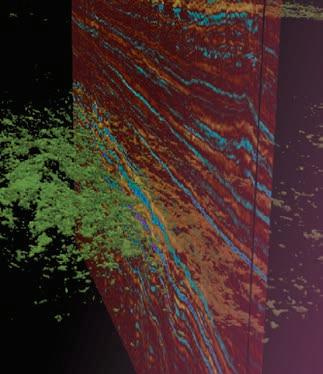
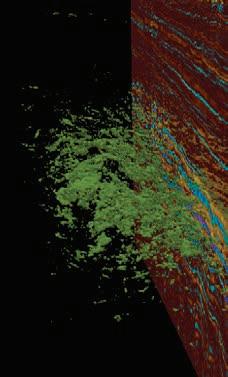


Speak to us now and take advantage of this unique opportunity. TGS.com

FIRST BREAK I VOLUME 41 I MARCH 2023 21 INDUSTRY NEWS
Liberia TGS Mar23.indd 1 13/02/2023 07:53
Norway awards 47 blocks in Awards in Predefined Areas 2021
A raft of seismic surveys will be commissioned after 25 companies were offered ownership interests in 47 production licences on the Norwegian Contintental Shelf in the Awards in Predefined Areas (APA) 2022. This compares to 53 production licences awarded in APA 2021.
The authorities evaluated applications from 26 companies during the autumn of 2022. Of the 47 production licences, 29 are in the North Sea, 16 in the Norwegian Sea and two in the Barents Sea. Twenty are additional acreage for existing production licences.
‘It’s gratifying to see such diversity in the player landscape, and that the companies are interested in the APAs and the Norwegian shelf. A key factor for further value creation on the shelf will be utilising available capacity in existing oil and gas infrastructure. That’s why it’s important that the companies continue active exploration to find resources that are close to this infrastructure,’ said the NPD’s director of licence management, Kalmar Ildstad.
Norwegian Sea
In the Norwegian Sea, Equinor Energy (46%), Petoro (14%) TotalEnergies (10%) and Vår Energi (30%) have won PL 6506/2. Aker BP (24%), Equinor Energy (36%), Wintershall Dea (40%) have won 6507/3. Equinor (51%), Shell (10%), Petoro (20%) and Wintershall Dea (19%) have won PL 6605/1 and 6705/10,11 with a commitment to carry out G&G studies. Vår Energi (40%) abd Sval Energi (60%) have won PL 6407/4. Aker BP (50%) and Harbour Energy (50%) have won PL 6507/3. Wintershall Dea (30%), Petoro (20%), Equinor (30%) and Harbour Energy (20%) have won PL 6407/10. Equinor (40%), DNO (20%), OKEA (20%) and Wintershall Dea (20%) have won 6406/9 and 12 and will reprocess 3D seismic and G&G studies. OKEA (40%), M Vest Energy (10%), DNO (30%) and Wintershall Dea (20%) have won PL 6407/9 and will reprocess 3D seismic and G&G studies. Equinor (35%), Petoro (35%), TotalEnergies (8%) and Vår Energi (22%) have won 6406/2 and 6506/8, 11 and 12 and will acquire 3D seismic and G&G studies. Equinor (35%), Petoro (35%),
TotalEnergies (8%) and Vår Energi (28%) have won 6506/12 and 6507/10 and will acquire 3D seismic and G&G studies. Harbour Energy (50%), PGNiG (20%), Lime Petroleum (30%) have won 6507/10 and 11 and will acquire 3D seismic and G&G studies. Equinor (40%), Aker BP (30%) and Wintershall Dea (30%) have won 6507/10 and 11 and will acquire 3D seismic and G&G studies. Vår Energi (50%) and TotalEnergies (50%) have won 6502/3,6, 6503/1,2,4 and 5 and will acquire 3D seismic and G&G studies. Aker BP (80%) and PGNiG (20%) have won 6507/3,6, and 6508/1 and will carry out G&G studies. OMV (40%), Vår Energi (30%) and INPEX Idemitsu (30%) have won 6605/6, 6606/4, 5, 7 and 8 and will carry out G&G studies. Equinor (70%) and Wintershall Dea (30%) have won PL 6605/4 and will carry out G&G studies.
North Sea
In the North Sea Wintershall Dea (40%) Petoro (40%) and DNO (20%) have won 35/11. Equinor (50%) Aker BP (50%) have won 25/2,3,30/11 and 12 with a commitment to reprocess 3D seismic and carry out G&G studies. Equinor (51%), DNO (29%), Longboat Energy (10%), INPEX Idemitsu (10%) have won 35/11 with a commitment to carry out G&G studies. Aker BP (80%) and ConocoPhillips (20%) have won PL 25/4. Equinor (51%) and Petoro (30%) and Sval Energi (19%) have won PL 29/6 and 30/4. Equinor (40%), Aker BP (30%) and Vår Energi (30%) have won PL 34/8 and will acquire 3D seismic data and G&G studies. Equinor (50%) and Wellesley Petroleum (50%) have won PL 35/10 and will acquire G&G studies. Equinor (50%) and Wellesley Petroleum (50%) have won PL 35/10 and will acquire G&G studies. Equinor (51%) and DNO (49%) have won PL 35/10. OMV (40%), Source Energy (20%), Longboat Energy (20%) and Wintershall Dea (20%) have won PL 30/8 and will carry out G&G studies. Aker BP (70%) and Equinor (30%) have won PL 16/1. ConocoPhillips (75%) and DNO (25%) have won PL 26/2. Wellesley Petroleum (50%), Aker BP (10%), DNO (30%) and Equinor (10%) have won 31/1 and 35/10 with a commitment to carry out G&G studies. Wintershall Dea (40%), Aker
BP (30%) and Pandion Energy (30%) have won PL 35/11. Aker BP (50%) and DNO (50%) have won PL 2/6, 8,9,10 and 12 and will acquire 3D seismic data and G&G studies. Aker BP (40%), PGNiG (30%), DNO (30%) have won 1/3 and 2/1 and will acquire and reprocess 3D seismic and G&G studies. Vår Energi (60%) and Equinor (40%) have won 16/10 and will carry out G&G studies. Equinor (60%), Petoro (20%) and KUFPEC Norway (20%) have won PL 16/4, 5,7 and 8 and will reprocess 3D seismic and carry out G&G studies. Aker BP (50%), LOTOS (20%) and DNO (30%) have won PL 25/4 and will acquire 3D seismic data and carry out G&G studies. Aker BP (60%), Concedo (40% have won PL 30/9 and will reprocess 3D seismic and carry out G&G studies. Equinor (40%), OMV (30%) and Sval Energi (30%) have won PL 30/4, 5, 7 and 8 and will acquire and reprocess 3D seismic, and carry out G&G studies. OKEA (50%) and Lime Petroleum (50%) have won 30/6, 1 and 2 and will acquire 3D seismic and carry out G&G studies. Equinor (45%), Neptune Energy (15%), Vår Energi (25%) and INPEX Idemitsu (15%) have won 31/2,3 and 35 and will carry out G&G studies. Neptune Energy (40%), Pandion Energy (30%) and OKEA (30%) have won PL 35/9, 12, 37/7 and 10 and will reprocess 3D seismic and carry out G&G studies. Petrolia NOCO (60%) and Wintershall Dea (40%) have won PL 34/7 and will acquire and/or reprocess 3D seismic data, and carry out G&G studies. DNO Norge (40%), Aker BP (30%) and Longboat Energy (30%) have won PL 35/10. Wellesley Petroleum (50%) and Equinor (50%) have won PL 35/10 and will acquire modern 3D seismic data and carry out G&G studies. Equinor (40%), Aker BP (20%), Sval Energi (20%) and Vår Energi (20%) have won 35/7 and 10.
Barents Sea
In the Barents Sea, Vår Energi (70%), OMV (30%) have won 7119/6, 9, 7120/1, 4 and 7 and will acquire 3D seismic and carry out G&G studies. Vår Energi (50%), Petoro (20%) and Equinor (30%) have won 7231/4, 5 and 6 and will acquire and reprocess 3D seismic (minimum 300 km2), and carry out G&G studies.
22 FIRST BREAK I VOLUME 41 I MARCH 2023 INDUSTRY NEWS
UK receives 115 bids in 33rd offshore oil and gas licensing round









The UK has received more than 100 applications for its 33rd offshore oil and gas licensing round
The round attracted 115 bids across 258 blocks and part-blocks, from a total of 76 companies. The process opened on 7 October and offered acreage across the North Sea. It included four priority areas, which have known hydrocarbons and could lead to production in as little as 18 months.
The round has attracted similar interest to the 32nd Licensing Round in 2019 which received 104 applications from 245 blocks and part-blocks. In 2019 a total of 768 blocks and part-blocks were offered, compared with 931 this year.
It is hoped that since the blocks consist of existing discoveries, the priority cluster areas can go into production in significantly less time than the average five years from award.
Production emissions have been cut by more than a fifth between 2018 and 2021. Projections indicate the sector is on track to meet emission reduction targets of 25% by 2027 – agreed in the North Sea Transition Deal in 2021.
Since February last year, North Sea Transition Authority interventions have prevented the lifetime emission of 1.4 million tonnes of CO2e.
The UK is hoping to award first licences in the second quarter of 2023.
wins first wind farm characterisation project
PGS
PGS has won its first ultra-high resolution windfarm site characterisation project.
The survey will cover two European windfarm sites, both of which are in a development phase. PGS will mobilise a 3D vessel for the project in early April 2023 and expects to complete acquisition towards the end of June.
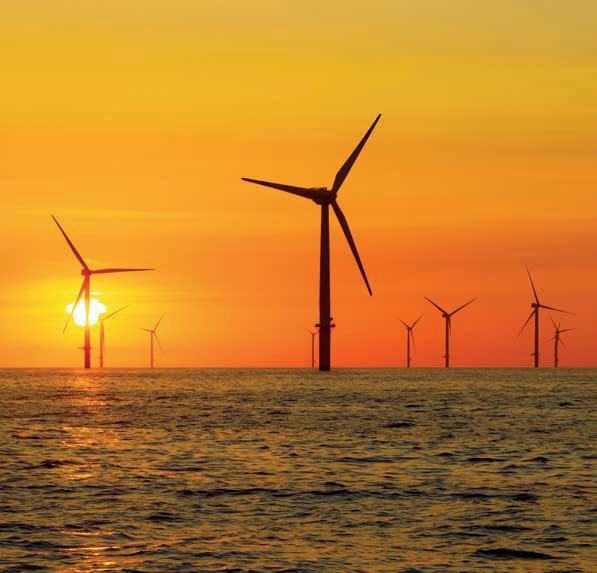
The project will be acquired with the ultra-high-resolution 3D (UHR3D) P-Cable system. P-Cable provides signif-
icantly more detailed subsurface data for shallower targets compared to traditional seismic acquisition systems.
‘Our P-Cable system acquires ultra-high-resolution 3D shallow subsurface data significantly more efficiently than conventional solutions. We believe our geophysical approach to understand the shallow subsurface layers has a proven market fit and is ready to be scaled to increase our market share in the offshore wind segment. Carbon storage and offshore wind farms are important components of the transition to a sustainable energy mix,’ said Berit Osnes, executive vice-president new energy in PGS.
Meanwhile, PGS has reported a fourth quarter net profit of $2 million on revenues of $251 million, compared to a net loss of $45 million on revenues of $174 million in Q4 2021. Operating profit was $46 million compared to $10 million in Q4 2021. The company reported a fullyear net loss of $33 million on revenues of $812 million, compared to a net loss of $180 million on revenues of $704 million in 2021. Full-year operating profit was $117 million compared to a 2021 operating loss of $32 million.







FIRST BREAK I VOLUME 41 I MARCH 2023 23 INDUSTRY NEWS corporaterelations@ eage.org Or call +31 88 9955055 DOES ADVERTISING WORK? IT JUST DID!
A North Sea offshore wind farm.
BRIEFS
PXGEO has signed a deal with Shell to provide 12 months of marine-towed streamer seismic acquisition services over a two-year period.
Sri Lanka is preparing to issue two-year licences for as many as 900 offshore oil and gas blocks. Starting up oil production is part of President Ranil Wickremesinghe’s plan to attract foreign investment as he seeks to stabilise the economy amid the country’s worst economic crisis in seven decades.
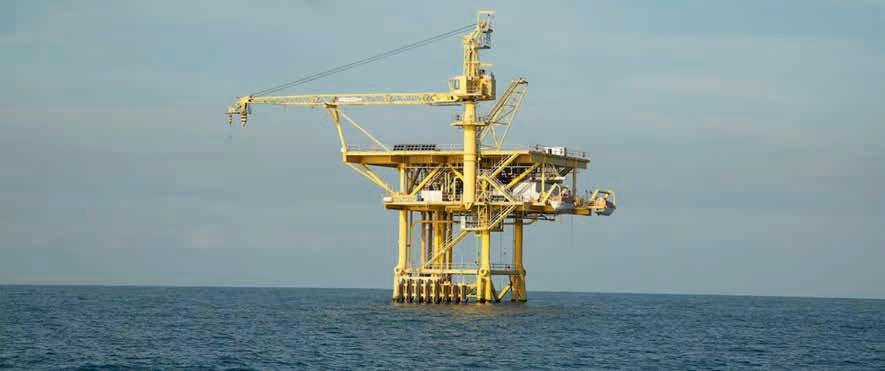
45-8 ENERGY is developing the RECYCL’He project, a mobile helium recycling unit. The goal of RECYCL’He is to preserve helium, the use of which is increasing, by democratising its recycling in Europe. Some 99% of the helium used in Europe is released into the atmosphere after single use. The Grand Est Region and the French government have given $470,00 to support the recycling system.
Seabird Exploration has won a contract for an extension to the 2D campaign in the Eastern Hemisphere. The extension adds 20% to the original contracted volume.
Uganda has signed production-sharing agreements for two oil exploration blocks. Australia’s DGR Global was awarded the Turaco exploration area, while Uganda’s state-owned Uganda National Oil Company (UNOC) was awarded the Kasuruban exploration area. Uganda is planning a third oil licensing round in May.
Geoex MCG has signed a deal with Venezuala to support the country’s strategy to open the offshore domain for oil and gas exploration. The agreement includes regional 2D multi-client surveys, reprocessing of 2D and 3D historical data and geochemical analysis.
Tetra Tech has acquired RPS Group, which employs 5000 people in the UK, Europe, Asia Pacific, and North America, delivering consulting and engineering solutions in energy transformation, water, programme management, and data analytics.
Trillion reprocesses 19-year-old 3D data in Black Sea
Trillion Energy International has launched a 223 km2 3D seismic reprocessing project that includes the SASB gas field in the Turkish sector of the Black Sea. The 3D seismic data shot by WesternGeco in 2004 is of good quality and was processed in 2004 with pre-stack time migration (PSTM), said Trillion.
‘Since 2004, vast improvements in seismic data processing algorithms have occurred. As SASB has very complex geology, reprocessing with advanced pre-stack depth migration (PSDM) and incorporating time-depth data from wells drilled since the old PSTM model will create a superior model,’ said Trillion.
The new PSDM seismic velocity model will obtain a more detailed and accurate mapping of individual gas reservoir units, better imaging of the gas trapping faults and superior structural maps, said Trillion. It will further, identify and define stratigraphic exploration gas prospects (to which there
are many on SASB) and map the deeper Cretaceous Akveren Formation ‘CAF’, which has never been explored, but which contains tantalising deeper anomalies based on the old PSTM model, the company added. Onshore and close to SASB, there are many oil and gas seeps originating and contained within the Cretaceous sediments. Data reprocessing is scheduled to commence early March 2023 and is anticipated to take five to six months.
Arthur Halleran, CEO of Trillion, said: ‘The cost of reprocessing is infinitesimal compared a new 3D shoot of this size. The reprocessing will allow mapping of extensions to existing structurally trapped gas pools, discovery of new gas pools and improved resolution of the stratigraphic exploration prospects. I am excited about what we will also see in the deeper Cretaceous-age formations, where onshore oil and gas seeps have been found 20 to 30 km from SASB.’
Carbon Transition sells more Utsira data offshore Norway
Carbon Transition has announced a $0.5 million multi-client seismic data licensing contract with a new customer. Under the contract, the customer will license Carbon Transition’s Utsira multi-client survey offshore Norway.
‘We are encouraged by the positive momentum in the multi-client market,’ said Carbon Transition in a statement. ‘A steady growth in the number of clients
licensing the Utsira data increases the market for the recently announced reprocessed upgrade-product. The reprocessed data will be an additional product only available to customers who have already acquired the underlying data. We believe the quality of the reprocessed product will improve late sales from the original data set and will result in significant additional late sales from the reprocessed data.’
24 FIRST BREAK I VOLUME 41 I MARCH 2023 INDUSTRY NEWS
It is hoped that reprocessing 3D data will increase prospectivity of the SASB field.
PGS wins two-year extension to framework deal with Equinor

Equinor has exercised an option to extend its framework agreement with PGS by an two additional years.
The two-year agreement covers 4D monitoring surveys on the Norwegian and the UK continental shelf. As part of the agreement, Equinor has two two-year options, of which one option has now been exercised.
From the current agreement, PGS will acquire a 4D survey over the Gullfaks field and a 4D survey over the Gudrun field during the 2023 summer season.
‘The confidence Equinor shows by extending the multi-year framework
agreement confirms our strong position in the 4D market,’ said PGS’ president and CEO, Rune Olav Pedersen Meanwhile, PGS has won a 3D exploration acquisition contract in the Mediterranean from an international energy company. The vessel Ramform Hyperion is mobilising for the survey and expects to complete in late April. ‘This is the third sequential survey for Ramform Hyperion in the highly active Mediterranean geo-market where we have built a solid acquisition campaign through the winter season,’ said president and CEO of PGS, Rune Olav Pedersen.
Sercel increases channel count for

508XT system in China
Sercel has delivered additional land seismic equipment to Sinopec for a 3D survey to be conducted in China.
The equipment includes a 508XT acquisition system with 25,000 channels as well as vibrator Auto-Guidance and Smart LF software. This purchase of a fifth 508XT system in four years brings the client’s 508XT inventory to 130,000 channels.
With its X-Tech cross-technology architecture, the 508XT enhances overall productivity by guaranteeing non-stop operations and fast data delivery. When combined with the Smart LF software that significantly reduces low-frequency vibrator-induced distortion, the system

delivers the cleanest seismic data available in the market, claimed Sercel. In addition, Sercel’s Auto-Guidance solution ensures faster and more accurate vibroseis operations, it added.

FIRST BREAK I VOLUME 41 I MARCH 2023 INDUSTRY NEWS
Sercel 508XT seismic acquisition system being deployed in the field (image courtesy of Sercel).
Ramform Hyperion vessel.
Energy majors report big fourth-quarter profits
Equinor has reported adjusted earnings of £15.1 billion and $5.8 billion after tax in the fourth quarter of 2022. Net operating income was $16.6 billion and net income was $7.9 billion. Net profit for the full-year 2022 was a record $28.7 billion, compared to $8.6 billion for the full-year 2021. The company delivered a total equity production of 2046 mboe per day for the fourth quarter, down from 2158 mboe per day in the same quarter of 2021.

During the quarter, Equinor brought on stream the Peregrino phase 2 project in Brazil and Askeladd, Johan Sverdrup Phase 2 and Njord Future on the NCS. It also completed five exploration wells offshore with one commercial discovery in the quarter and four wells were ongoing at the quarter end.
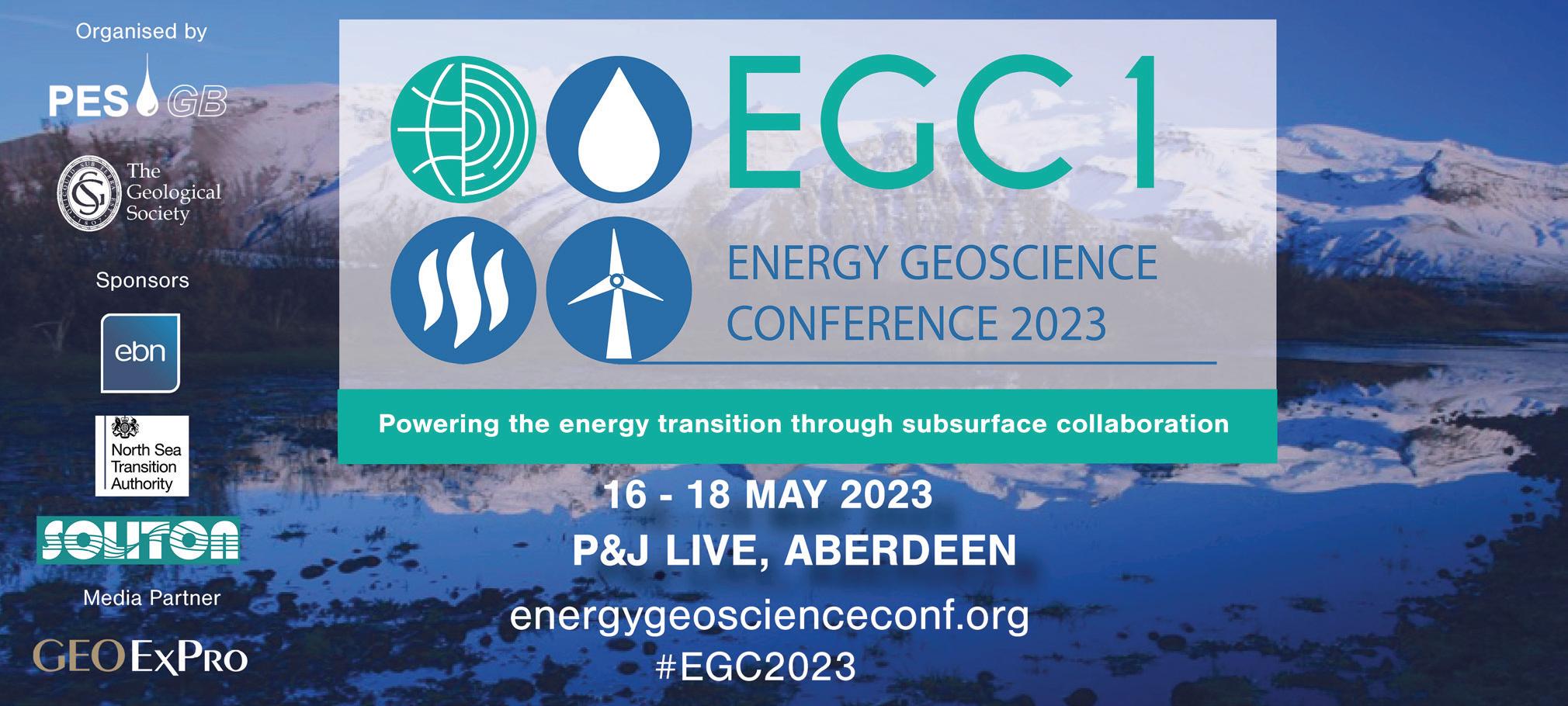
Shell has reported fourth-quarter adjusted earnings of $9.8 billion, with adjusted EBITDA of $20.6 billion, compared to Q3 adjusted earnings of $9.45 billion with adjusted EBTIDA of $21.5 billion. Fullyear adjusted earnings were $39.9 billion with EBTIDA of $84 billion, compared to $19 billion and $55 billion in 2021. Expected cash capex for this year is in the range of $23-27 billion.
Conoco Phillips has reported fourth-quarter 2022 earnings of $3.2 billion, compared with fourth-quarter 2021 earnings of $2.6 billion. Excluding special items, fourth-quarter 2022 adjusted
earnings were $3.4 billion, compared with fourth-quarter 2021 adjusted earnings of $3 billion. Full-year 2022 earnings were $18.7 billion, compared with full-year 2021 earnings of $8.1 billion. Excluding special items, full-year 2022 adjusted earnings were $17.3 billion, compared with full-year 2021 adjusted earnings of $8 billion.
TotalEnergies has reported fourth-quarter adjusted net income of $7.6 billion and IFRS full-year net income of $20.5 billion, during which the company made two discoveries in Cyprus and Brazil.
Chevron has announced fourth-quarter earnings of $6.4 billion, compared with $5.1 billion in Q4 2021. Adjusted earnings of $7.9 billion compared to adjusted earnings of $4.9 billion in Q4 2021. Chevron reported full-year 2022 earnings of $35.5 billion, compared with
$15.6 billion in 2021. Adjusted earnings of $36.5 billion in 2022 compared to adjusted earnings of $15.6 billion in 2021.
Exxon Mobil has reported fourth-quarter earnings of $12.8 billion, resulting in full-year earnings of $55.7 billion. Fullyear 2022 investments were $22.7 billion. The company generated earnings of $55.7 billion and $76.8 billion of cash flow from operating activities in 2022.
bp has reported fourth quarter profit of $10.8 billion, compared with a loss of $2.2 billion for the third quarter 2022. Underlying replacement cost profit for the quarter was $4.8 billion, compared with $8.2 billion for the previous quarter. Compared to the third quarter, the result was impacted by a below-average gas marketing and trading result and lower oil and gas realisations. Net debt reduced to $21.4bn.
26 FIRST BREAK I VOLUME 41 I MARCH 2023 INDUSTRY NEWS EGC1 1/3 horizontal.indd 1 01/02/2023 07:42 ADVERTISEMENT
Equinor’s Øyvind Gravås project in the North Sea. Photo: Jane Arne Wold.
RESERVOIR MONITORING
Reservoir monitoring is crucial to the sustainability and reputation of the industry as energy companies respond to the challenge of optimising their fields while their infrastructure is still operational. This has become especially important in an era when oil and gas from established sources are in high demand in the western world as result of international sanctions on Russia after its invasion of Ukraine. Ocean bottom seismic monitoring techniques are evolving fast and are becoming more precise. At the same time monitoring is becoming increasingly important for identifying sites for carbon capture, storage and utilisation.
Ngoc-Tuyen Cao et al discuss the merits of trying to improve surface monitoring array performance by deploying the sensors at the shallow borehole?
Mohammed Braim et al discuss the results and lessons learnt from a long-term seismicity monitoring for the CCUS Quest project near Edmonton, Alberta, Canada
Gustavo Côrte et al extract multiple equiprobable realisations and define conditional bounds for the pressure and saturation changes that are helpful for reservoir management and 4D seismic data assimilation into reservoir simulation models.
Killian Ikwuakor demonstrates the strong potential of using impedance-velocity relationships for quantitative interpretations of well logs and reflection seismic data.
Mohamed Mahgoub et al demonstrate application of a 4D seismic co-processing workflow to detect and quantify a 4D signal even with sub-optimal repeated acquisition geometry.
Ola Eiken et al quantify the amount of reservoir porepressure drop, size of gas cap expansion and vertical movements of the gas-liquid contact to a precision well below 1 m.
Submit an article
First Break Special Topics are covered by a mix of original articles dealing with case studies and the latest technology. Contributions to a Special Topic in First Break can be sent directly to the editorial office (firstbreak@eage.org). Submissions will be considered for publication by the editor.
It is also possible to submit a Technical Article to First Break. Technical Articles are subject to a peer review process and should be submitted via EAGE’s ScholarOne website: http://mc.manuscriptcentral.com/fb
You can find the First Break author guidelines online at www.firstbreak.org/guidelines.
Special Topic overview
January Land Seismic
February Digitalization / Machine Learning
March Reservoir Monitoring
April Unconventionals and Passive Seismic
May Global Exploration Hotspots
June Securing a Sustainable Future Together
July Modelling / Interpretation
August Near Surface Geo & Mining
September Reservoir Engineering & Geoscience
October Energy Transition

November Marine Acquisition
December Data Management and Processing
More Special Topics may be added during the course of the year.
36 FIRST BREAK I VOLUME 41 I MARCH 2023
Special Topic
World's First Smar t Seismic Sensor
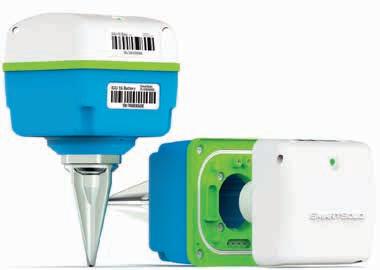












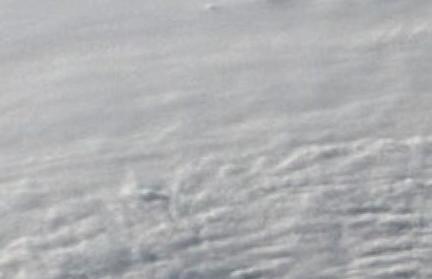
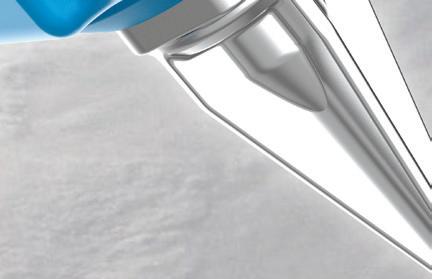
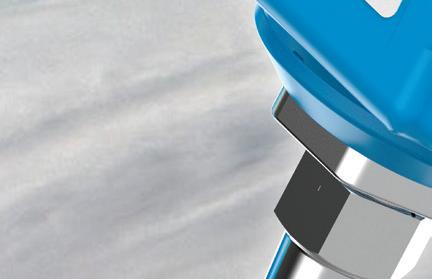
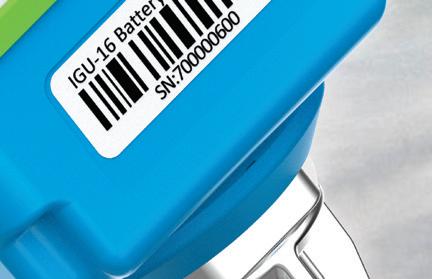

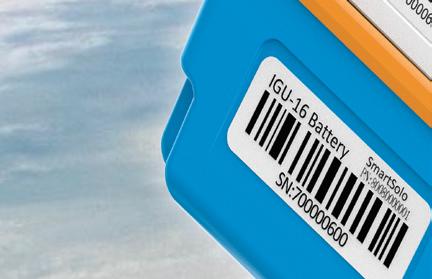
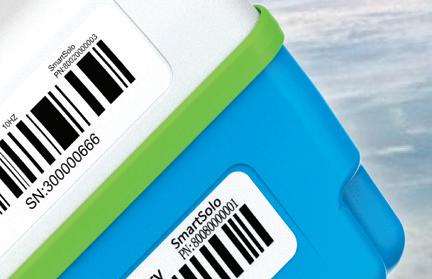


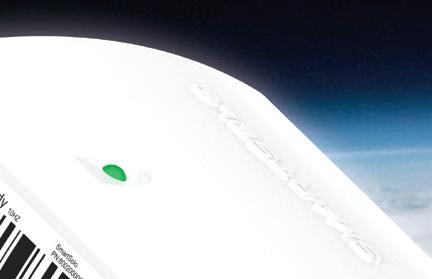
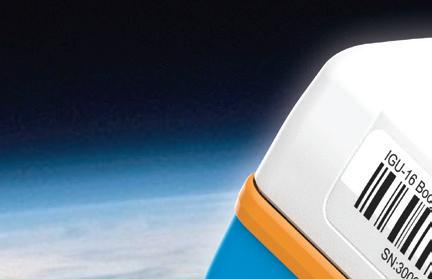
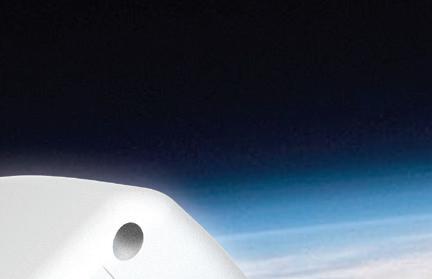
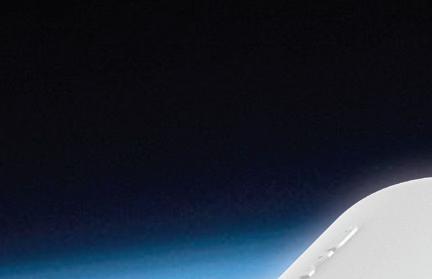





IGU-16
Built-in high-sensitivity DT-SOLO single-component geophone (5/10Hz) . IGU-16 is simple, convenient, reliable and very cost-effective. Provide customers with accurate 3W data (WHEN, WHERE, WAVE).

Application: Oil & Gas, Geothermal and Mining exploration
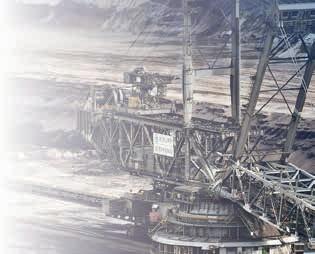

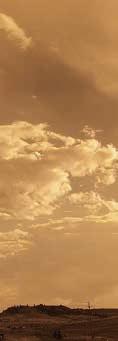




IGU-16HR IES
Built-In DT-Solo High-Sensitivity Sensor 5Hz & 10Hz External Sensor Option; Geophone & Marsh Strings, Hydrophone;Support for Bluetooth QC and Find Function
Application: Oil and gas exploration,Tunnel Geological Prediction

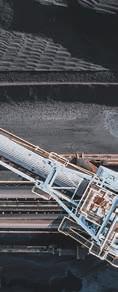

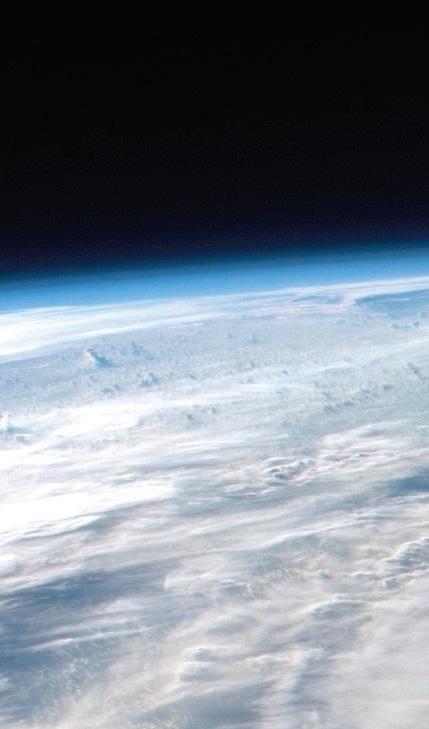
International Sales
Unit 145, 3901-54 Ave, NE

Calgary,AB T3J 3W5 Canada

Tel+1-403-2641070


Toll Free:+1-888-604 SOLO(7656)
Makes Cost-effective High Density Seismic Possible www.SmartSolo.com
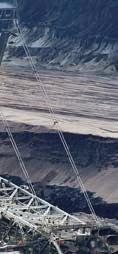




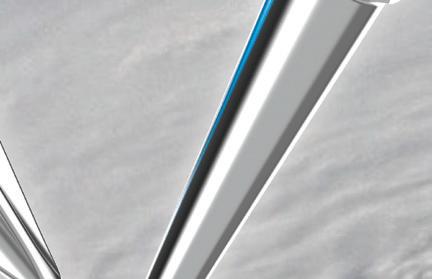
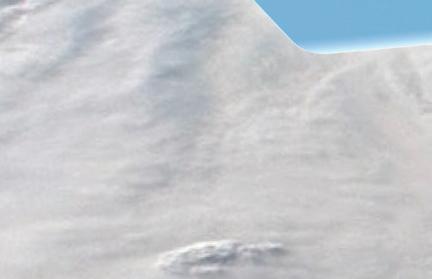







Email: sales@smartsolo.com




REGISTRATION OPEN!







































































































































































































































































































































WWW.IMOGCONFERENCE.ORG
How mentoring can promote gender equality in academia and industry
EAGE’s Women in Geosciences and Engineering (WGE) community – men and women –organises regular events to grow a collaborative network across genders, ages, and specialisations. Adeline Parent, WGE community board member, highlights some background to these initiatives, particularly the value of mentoring programmes.
A recent WGE webinar raised a provocative question reflected in its title: ‘Where are the women? Gender and diversity at RWTH Aachen University, best-practice project TANDEMPlus’. It was an opportunity for Dr Ralitsa Petrova-Stoyanov and M.A. Ramona Liedtke from the RWTH’s Human Resources, Gender and Diversity Management to share their perspective and practical insights on how the university tackles the challenges of women’s retention in academia with a strategy of creating equal opportunities for all through their best-practice project.
Although the event was mostly focused on gender equality in academia, the debated problems exist in industry too so the value of mentorship programmes as a possible solution applies to both domains.
To illustrate the issue, in 2018, women in the EU represented more than 40% of academic staff on average. However, going up the academic ladder, women made up only one-fourth (26.2%) of grade A positions (equivalent to full professorship positions). While there has been some progress, women represented less than 25% of heads of institutions in the higher education sector in 2019, just over three out of 10 board members were women (31.1%) and under one quarter of board leaders (24.5%) were women at European level.

Recognising the problem is only part of the solution. Fortunately, there are a growing number of initiatives, for example SPEAR (https://gender-spear.eu/about-spear) which helps to design a sustainable and effective gender equality plan at an institutional level. Various mentoring programmes can make a huge difference in individual lives and careers, as well as contributing to a gender-equal world. EAGE has its own mentoring programme which consists of a one-year exchange process on career development for pairs of EAGE members matched based on their goals and preferences.
Mentoring programmes may decrease stress in the workplace, increase job satisfaction thus retention of employees, and possibly enhance networking opportunities outside the organisation. There is also growing evidence of reciprocal value for both mentees and mentors, especially in the context of rapid technology transition challenges in both academia and industry.
For individuals, mentorship is a great way to learn from someone who has a lot of practical knowledge and experience. It is a chance to get one-on-one guidance on both personal and professional development. Around 97% of mentees report that
mentorship programmes are valuable to their professional development. Employees who received mentoring were promoted five times more often than those who didn’t have mentors, according to National Mentoring Day statistics.
Providing mentors to women and other under-represented minority groups (URMs) helps to create a more equitable environment, and access to valuable resources. Also mentorship means having more women in leadership roles, which is a great way for companies to benefit from gender diversity.
Focusing on mentoring programmes might help to address the issues revealed in a report by the American Association of University Women. It found that only 12% of black women in STEM (Science, Technology, Engineering and Mathematics) pursue those fields after graduation. This highlights the need for more organisations to focus on increasing diversity within their workplace. Mentoring programmes could help young women to reach their goals by learning from professionals in the field to advance their careers in STEM related fields.
Even as more workplaces recognise the value of mentoring, it is still up to individuals to take the first step to get involved. In an empowering statement, Zénaba Putola, human resources manager, EMEA & APAC, Tech Soft 3D, noted during the EAGE WGE event held in October: ‘We (women) stop ourselves from moving forward. Unlike men who just grab opportunities, women tend to make sure they are 100% confident before going for the role/opportunity. We should take it and grab it even if we don’t have 100% of the capacity, skills, and competency. We will learn it on the way. So, just go for it!’
Views expressed in this article are solely those of the author, who can be contacted via gwenola.michaud@cognite.com
FIRST BREAK I VOLUME 41 I MARCH 2023 81 FEATURE: WHATSUP!
Proportion of men and women in EU (27) in a typical academic career based on Women in Science database, DG Research and Innovation, 2015-2018.
CALENDAR OF EVENTS

5-8 JUNE 2023
84th EAGE Annual Conference & Exhibition
Vienna, Austria www.eage.org
March 2023
1-3 Mar International Petroleum Technology Conference (IPTC) 2023 2023.iptcnet.org
6-9 Mar 5 th Asia Pacific Meeting on Near Surface Geoscience & Engineering www.eage.org
20-22 Mar Third EAGE Digitalization Conference and Exhibition www.eagedigital.org
May 2023
16-18 May Energy Geoscience Conference 2023 www.energygeoscienceconf.org
June 2023
5-8 Jun 84th EAGE Annual Conference & Exhibition www.eageannual.org
July 2023
9-14 Jul Goldschmidt2023 2023.goldschmidt.info
August 2023

15-16 Aug 2 nd EAGE Workshop on Fluid Flow in Faults and Fracture www.eage.org
16-18 Aug First EAGE Conference on Deepwater Equatorial Margin: New Energy Frontier for South America “From exploration to Production with social sustainability” www.eage.org

22-23 Aug EAGE Workshop on Unlocking Carbon Capture and Storage Potential www.eage.org
31 Aug1 Sep First EAGE Workshop on Hydrogen & Carbon Capture Sequestration in LATAM www.eage.org
Bangkok Thailand
Taipei Taiwan
London United Kingdom
Aberdeen United Kingdom
Vienna Austria
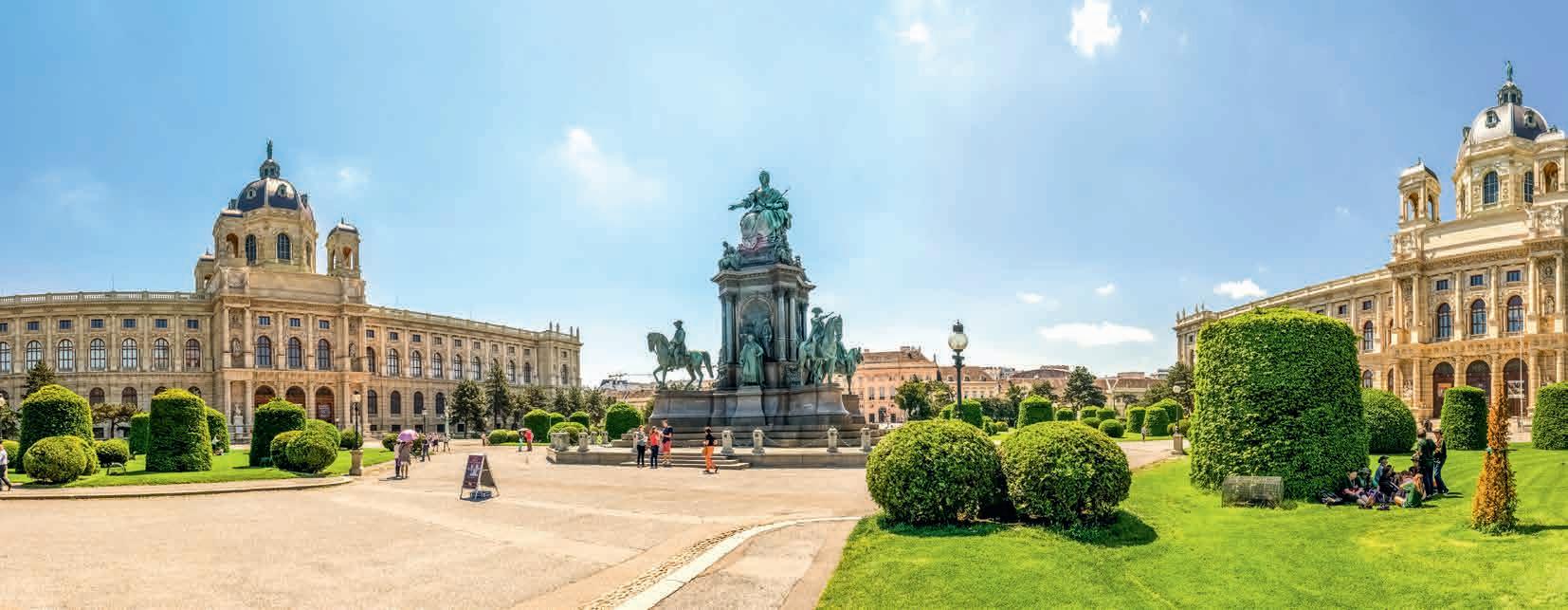
Lyon France
Canberra Australia
Rio de Janeiro Brazil
Kuala Lumpur Malaysia
Medellin Colombia
82 FIRST BREAK I VOLUME 41 I MARCH 2023 CALENDAR EAGE Events Non-EAGE Events
September 2023
3-7 Sep Near Surface Geoscience Conference & Exhibition 2023 www.eagensg.org
10-15 Sep IMOG 2023
31st International Meeting on Organic Geochemistry www.imogconference.org
12-13 Sep EAGE Conference on the Future of Energy - Role of Geoscience in the Energy Transition www.eage.org
18-20 Sep Seventh EAGE Borehole Geophysics Workshop www.eage.org
18-20 Sep Second EAGE Seabed Seismic Workshop www.eage.org
20-22 Sep First EAGE Conference on Offshore Energy Resources in the South Atlantic www.eage.org
October 2023
Oct Fifth EAGE Borehole Geology Workshop www.eage.org
Oct Hydrocarbon Prospectivity of the Northern Emirates www.eage.org
2-4 Oct AAPG/EAGE Workshop on New Discoveries in Mature Basins www.eage.org
2-4 Oct 22 nd European Symposium on Innovative and Optimised Resource Utilisation (IOR+) www.eage.org
17-18 Oct EAGE Workshop on Data Science www.eage.org
19-20 Oct First EAGE Workshop on Water Footprint www.eage.org
November 2023
Nov Fourth SPE/EAGE Geosteering and Well Placement Workshop www.eage.org
Nov EAGE/AAPG Hydrocarbon Seals Workshop www.eage.org
2-3 Nov 2 nd EAGE/Aqua Foundation Indian Near Surface Geophysics Conference & Exhibition www.eage.org
6-9 Nov GET 2023
4th EAGE Global Energy Transition Conference & Exhibition www.eageget.org
11-16 Nov Second EAGE Workshop on Geothermal Energy in Latin America: Worldwide Opportunities www.eage.org
21-22 Nov 2 nd EAGE Workshop on Quantifying Uncertainty in Depth Imaging www.eage.org
21-23 Nov Fifth EAGE Borehole Geology Workshop www.eage.org
27-30 Nov Fifth EAGE Conference on Petroleum Geostatistics www.eage.org
28-30 Nov EAGE/ AAPG Hydrocarbon Seals Workshop www.eage.org
30 Nov1 Dec Third EAGE Workshop on Mineral Exploration in Latin America: “The Role of Mining in the Energy Transition“ www.eage.org
Events
Edinburgh United Kingdom
Montpellier France
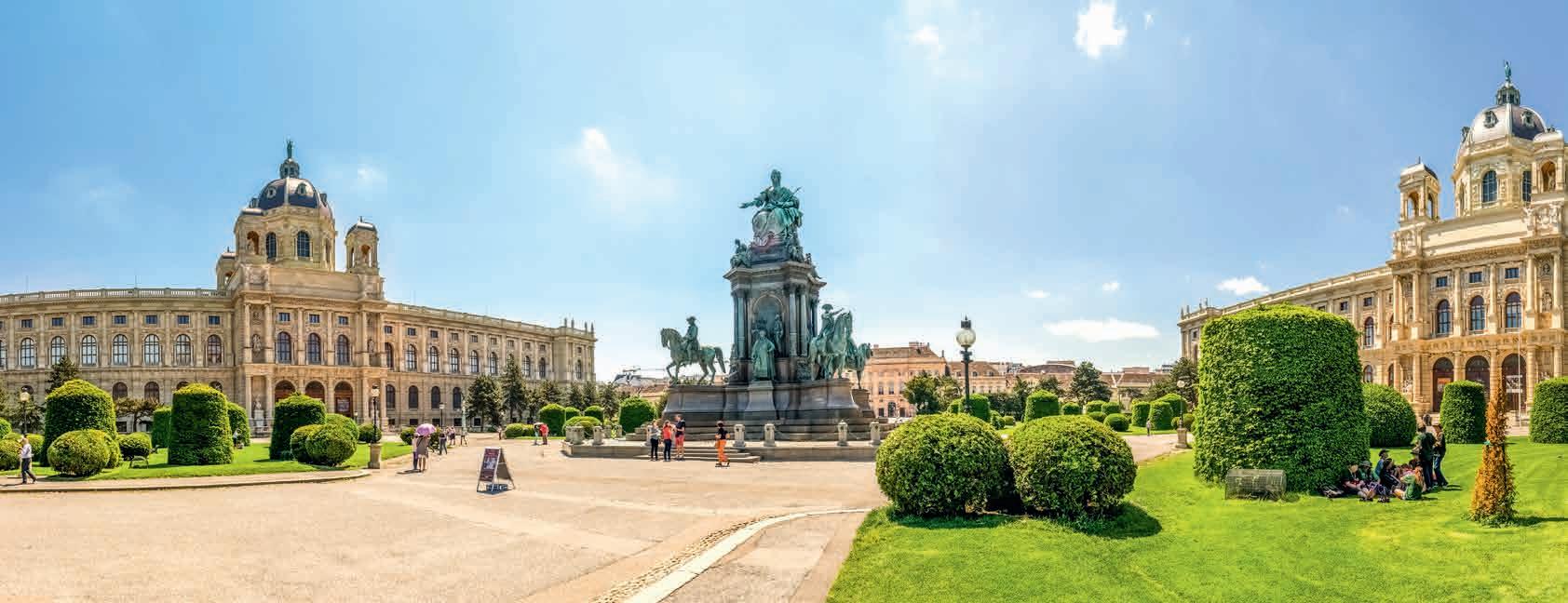
Kuala Lumpur Malaysia
Lake Como Italy
Lake Como Italy
Montevideo Uruguay
Dhahran Saudi Arabia
Ras Al-Khaimah UAE
Kuala Lumpur Malaysia
The Hague The Netherlands
Kuala Lumpur Malaysia
Bogota Colombia
Abu Dhabi UAE
Dhahran Saudi Arabia
New Delhi India
Paris France
Guanacaste Costa Rica
Kuala Lumpur Malaysia
Dhahran Saudi Arabia
Porto Portugal
Dhahran Saudi Arabia
Santiago de Chile Chile
FIRST BREAK I VOLUME 41 I MARCH 2023 83 CALENDAR EAGE
Non-EAGE
Events



























WWW.EAGEDIGITAL.ORG REGISTER NOW TO CLAIM YOUR SPOT TECHNOLOGY DRIVING INNOVATION FOR THE FUTURE JOIN EAGE’S FLAGSHIP EVENT HIGHLIGHTING DIGITALIZATION AND TECHNOLOGICAL INNOVATION IN THE SUBSURFACE The energy industry is going digital, and so are we! STRATEGIC PROGRAMME Enagage with Executive Speakers in Keynotes, Roundtables and Panel Discussions TECHNICAL PROGRAMME Delve into Diverse Oral and Poster Presentations FOCUSED EXHIBITION Meet the Companies Pioneering Digital Solutions HOST SPONSOR CO-HOST SPONSOR 20-22 MARCH 2023 I LONDON I UNITED KINGDOM


























3-7 SEPTEMBER 2023 | EDINBURGH, UK JOIN THE BRIGHT MINDS OF THE NEAR-SURFACE INDUSTRY! CALL FOR ABSTRACTS IS OPEN! E u r o p e a n M e e t i n g o f E n v i r o n m e n t a l a n d E n g i n e e r i n g G e o p h y s i c s 29th C o n f e r e n ce o n G e o p h y s i c s f o r In f r a s t r u c tu r e P l an n i n g , M o n i t o r i n g a n d B I M 3rd C o n t r i b u t i o n t o E x p lo r a t i o n a n d M a n a g e m e n t o f G r o u n d w a t e r, L a n d- U s e a n d N a t u r a l H a z a r d s u n d e r a C h a n g i n g C l i m a t e 2nd C o n f e r en ce o n H y d r o g e o p h y s i c s 1st Conference on Sub-surface Characterisation for Offshore Wind




































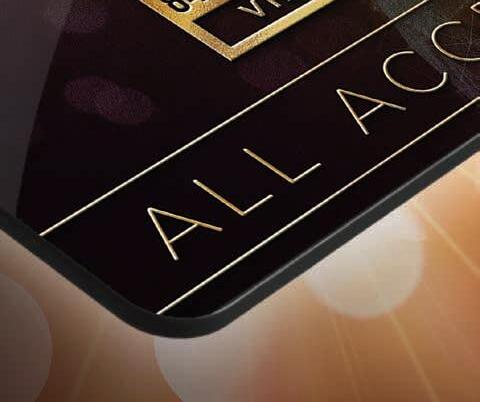



















INCLUDING BUNDLE & SAVE! YOUR OPPORTUNITY TO ENJOY THE FULL EVENT EXPERIENCE AT A REDUCED RATE! JOIN THE LARGEST MULTIDISCIPLINARY GEOSCIENCE & ENGINEERING EVENT REGISTER AT WWW.EAGEANNUAL.ORG EARLY BIRD OFFER ENDS ON 15 MARCH 2023 HOST SPONSOR MAIN SPONSORS The new All Access Pass includes: -Full Technical Programme -Strategic Programme (New) -Exhibition & Special Theatres -Social & Networking Programme -Workshops, Field Trips and Courses S U STAINABLE





































































































































































































































































































































































































































































































































































































































































































































































